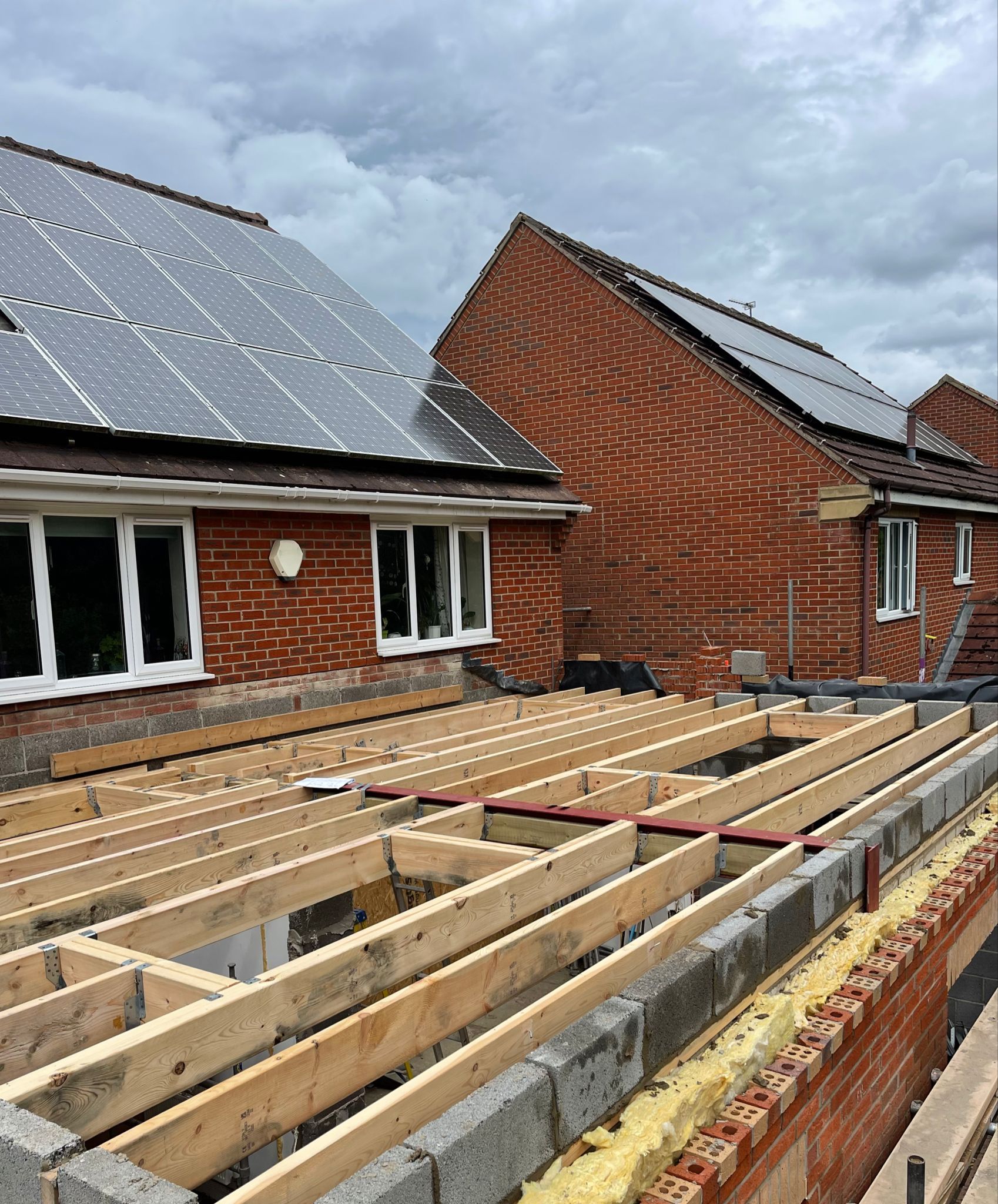Articles

April 14, 2025
If you’re planning on extending your home, you might be looking at keep the costs down without compromising on quality - we all know the cost of living is on the rise! Whether you’re planning a bigger kitchen, a new bedroom, or even just some more space, house extensions don’t have to break the bank — but they do require careful planning. The cheapest way to build a house extension often comes down to being clever with design, materials, and the type of extension you choose. It’s not just about picking the lowest quote; it’s about making smart decisions that reduce labour and material costs while still giving you a functional, attractive space. Keep it simple One of the first things to consider is the design. A straightforward, single-storey extension with a square or rectangular footprint is almost always cheaper than more complex shapes or multi-storey additions. Odd angles, curves, or unusual rooflines look great but cost more due to the extra time and materials needed. Likewise, flat roofs are usually cheaper than pitched roofs — both in materials and labour. While a pitched roof may be more in keeping with the existing property and often lasts longer, a well-installed flat roof can be a perfectly practical and cost-effective choice, especially for rear kitchen or bathroom extensions and will realistically last well in excess of 20 years. Build up, not out In some cases, building upwards instead of outwards can save you money. A two-storey extension will naturally cost more than a single-storey one overall, but it generally costs less per square metre because you’re using the same foundations and roof for twice the space. If you're already doing a single-storey extension. Limit internal changes and plumbing work One of the hidden cost drivers in home extensions is moving or adding plumbing. If your extension involves a new kitchen or bathroom, try to position it near existing plumbing lines. The closer you can keep it to the current setup, the less invasive and expensive the work will be. For example, if you're adding a downstairs bathroom, placing it just behind or below an existing bathroom or kitchen makes life much easier for your builder and plumber — and your wallet. Similarly, avoid major structural changes to the existing building if possible. Knocking through supporting walls, altering floor levels, or rerouting electrics and heating systems will all push up the budget. Keeping the layout simple and working with the existing structure saves time and money. Of course its a ballance between design and budget. Compromising on the design too much to save money can make the build ineffective for you. Choose cost-effective materials Material choices have a huge impact on your final cost. Brick is the most common choice for UK extensions, and it often makes sense to match the existing exterior. But if appearance isn’t a huge priority (say, for a rear extension not visible from the road), you could opt for cheaper alternatives like rendered blockwork or even timber cladding. Inside, you don’t have to go budget, but you can cut costs by choosing mid-range finishes and fittings. If you’re fitting out a bathroom, for example, we always advise our customers that a well-laid, classic white suite and practical vinyl flooring can look just as good as more expensive options — especially when professionally and skillfully installed. Don’t forget planning and building regs It might sound obvious, but getting the paperwork right from the start can avoid costly delays or having to redo work. In some cases, your extension might fall under permitted development, which means you don’t need planning permission — a potential time and money saver. But you’ll still need to comply with building regulations. Working with a reputable builder who understands local planning rules can help you navigate this smoothly. We often work with homeowners from the early planning stages and find that taking the time to get it right upfront means fewer surprises and a smoother build. We have vast experience in the York and North Yorkshire area so know the lay of the land! Don't act as your own project manager One way to add costs is to manage the project yourself and make mistakes! Coordinating individual trades like bricklayers, electricians, plumbers, and decorators can be a nightmare and having a trade onsite but idle quickly adds cost. It's tyoically more effective to just have us do all the management of the build and remove the risk!

March 15, 2025
A loft conversion is a fantastic way to add space and value to your home, but how long does it actually take? The timeline depends on the type of conversion, your home's size, and any unexpected challenges. Generally, most loft conversions from our experiance in take 6 to 12 weeks. Planning & Preparation Before any work starts, there’s a planning stage that can take anywhere from a few weeks to a couple of months. If your conversion is under permitted development, you can move quickly. However, if planning permission is required, approval alone takes up to 8 weeks. Structural calculations and building regulations approval also need to be factored in before construction begins, however the houses around York particularly are well suited for conversions falling under permitted development. Main Construction Phase The actual building work varies depending on the conversion type: Rooflight conversion: 2–6 weeks – the simplest option with minimal structural changes. Dormer conversion: 4–8 weeks – adds headroom and space with a box extension. Hip-to-gable or Mansard conversion: 8–10 weeks – involves extensive roof alterations. Insulation, Plastering & Utilities Once the main structure is complete, insulation, plaster boarding, and plastering are done. After that, electricians and plumbers install lighting, sockets, and radiators. This phase usually takes 1–2 weeks. Finishing Touches The final stage includes flooring, skirting boards, doors, and any built-in storage. Painting and decorating can take up to another week, depending on complexity. Possible Delays & Considerations Several factors could extend the timeline: Weather Conditions – bad weather can slow things down, you dont want a big hole in the roof when its heavy rain! Structural Changes – If your roof needs reinforcement, additional time may be needed. Material Delays – Supply issues can occasionally hold up progress. Access Limitations – Restricted loft access can slow the movement of materials and workers. The best way to get an accurate idea is to have us come round and discuss your ideas and offer our advice!

December 17, 2024
Creating a beautiful and functional outdoor space is a perect way to enhance your home extension if you are extending out into the garden space. If you are lucky enough to be close to the York city centre to gain views of the minster or even the holgate windmill its almost a must have but even without these views its an amazing addition to any building work. Incorporate York’s Natural Elements with Native Plants York’s natural beauty and seasonal changes make it an ideal place for a landscape inspired by the local environment. Incorporating native plants not only enhances your garden's aesthetic appeal but also promotes biodiversity by attracting local wildlife. Plants such as foxglove, bluebells, and cowslip thrive in York’s climate and offer vibrant colour throughout the seasons. Work with a local gardener or landscape designer to identify plants that work well with your soil type and garden size. Plan for the sun path and make the most of the sun light you get. You can also add features like bird feeders and bird baths to invite wildlife to your garden. Whilst we don't do the plants we work with some amazing garden designers who can influence the work we do to deliver a lovely space. Create Cozy Seating Areas for Year-Round Enjoyment York’s weather may be a bit unpredictable, but with the right seating area setup, you can enjoy your outdoor space almost year-round. A comfortable seating area can be as simple as a small patio with chairs or as elaborate as a covered outdoor lounge with heating options for colder months. Opt for furniture made of weather-resistant materials like treated wood or metal, and consider adding outdoor rugs and cushions for comfort. Try built-in benches or compact furniture to maximise the area. Adding a pergola or retractable awning can provide shade and shelter, making the space versatile enough to enjoy in rain or shine. Use Hardscaping to Define and Divide Spaces Hardscaping—using non-plant materials like stone, gravel, or wood—can help define spaces within your outdoor area. In York, where gardens often have unique shapes or historic elements, hardscaping can lend structure and depth to your landscaping design. Whether it’s a cobblestone path, a stone retaining wall, or gravel walkways, hardscaping adds functionality while complementing the natural beauty of your plants. Add a Water Feature for Tranquility The sound of running water brings a peaceful atmosphere to any garden, creating a tranquil retreat from the hustle and bustle of daily life. Even in a small garden, a small pond or fountain can introduce a soothing element. Larger yards may benefit from a more substantial feature, like a waterfall or koi pond, which also enhances the natural beauty of the space. For a simple DIY option, consider a standalone water fountain or small birdbath. A water feature can also encourage birds and other wildlife, enhancing your garden’s biodiversity. Plant for Privacy with Hedges and Climbing Plants Privacy is a priority for many homeowners, especially in city gardens or areas with close-set homes. If you’re looking to create a secluded oasis, hedges, trees, or climbing plants are excellent choices. Planting a hedge along the perimeter of your garden can create a natural barrier, while climbing plants like ivy or wisteria add a lovely green screen on fences or trellises. Climbers can also be trained along yard walls which add a touch of green to the Victorian terrace houses in some areas of York. Consider Lighting for Ambiance and Security Outdoor lighting can transform your garden at night, making it an inviting space even after the sun goes down. From ambient string lights to solar path lights, there are endless options for illuminating your outdoor space. Not only does lighting create ambiance, but it also improves security and visibility around your home. Use soft, warm lighting to highlight pathways, seating areas, and garden beds. String lights work well for patios, while solar-powered lights are perfect for lining pathways. Be mindful of light pollution—choose lighting that’s directed toward the ground to keep your garden softly lit without disturbing the natural surroundings. With thoughtful planning, your home’s outdoor space can become a stunning and functional retreat, perfectly suited to your lifestyle and the local landscape. From planting native flora to installing seating areas, there are countless ways to maximize the beauty and utility of your garden. Embrace York’s unique environment, incorporate some of these ideas, and enjoy your own little slice of paradise right outside your door.
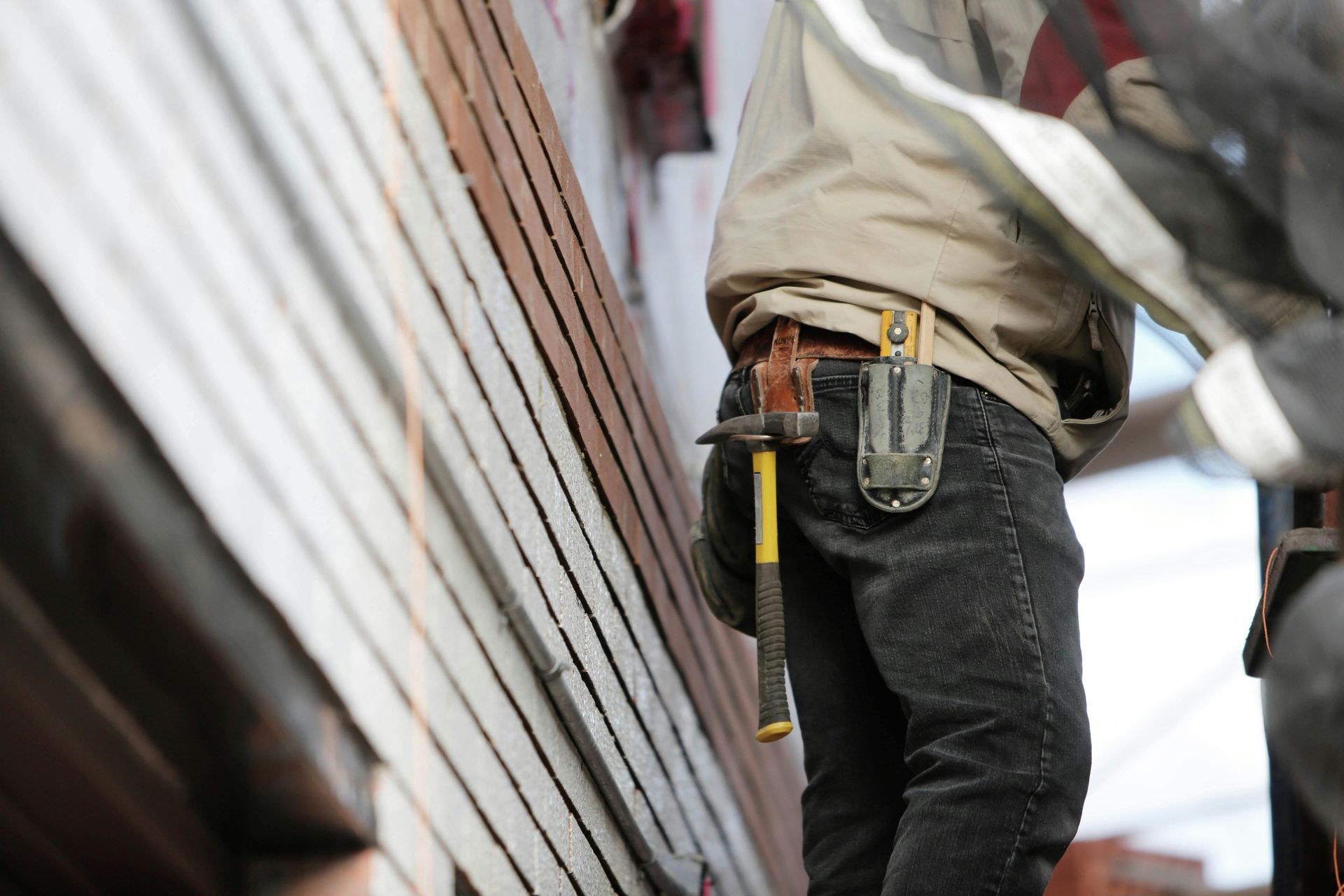
November 1, 2024
Building a home extension is an exciting journey. Turning your house into the perfect home. Maybe you have just moved in and planned from the start to create the perfect house, or maybe things have changed and now is the right time to convert your home. The process can come with its fair share of challenges, especially for first-time builders. From budgeting missteps to unforeseen delays, there are common pitfalls that can derail even the best-laid plans. Fortunately, understanding these potential hurdles ahead of time can go a long way in ensuring a smooth, successful project. Thats where AG Developments and Construction come in with our years of experiance in the York and Pocklington areas we can ensure smooth sailing. Underestimating the Budget Budgeting is one of the most critical aspects of any home-building project, yet it’s often underestimated. Building an extension involves more than just construction costs—there are planning fees, material upgrades, smart features, and sometimes unanticipated expenses that can crop up. In York, for instance, building costs can vary significantly depending on the area and if it has any historic protection or features. How to Avoid It: Work with a detailed budget from the outset, accounting for every line item, from the initial planning and design to finishes and landscaping. Be sure to factor in a contingency fund of at least 10-15% of the total budget to cover any unexpected expenses. We can help with accurate estimates and highlight where to plan for a contingency. Overlooking Local Planning Permissions and Building Regulations Every local authority has its own planning and building regulations, which are enforced to ensure safe, sustainable construction. York’s council has guidelines that may differ slightly from those in other parts of the UK, especially nearer the city. The outskirts such as Haxby and Strensall are a bit less challenging. Ignoring or misunderstanding these requirements can lead to costly delays and even legal complications. How to Avoid It: Consult with a local architect or planning consultant who understands York’s specific regulations. They can guide you through the planning process, help you avoid missteps, and even handle much of the paperwork on your behalf. It’s also worth checking for any local restrictions if your house is in within the more historic parts of York. Choosing the Wrong Builder A builder can make or break a project. While it may be tempting to go with the lowest bid, this can sometimes lead to subpar work or unanticipated issues that end up costing more in the long run. The area has a range of experienced builders, but not all may specialise or have experiance in the type of build you’re looking for, particularly if you want specific architectural features or eco-friendly design. How to Avoid It: Take the time to research and vet potential contractors thoroughly. Check references, look at previous projects, and ensure they’re familiar with York’s building requirements. Getting quotes from multiple contractors can provide a sense of fair pricing, but always prioritize reputation and experience over cost alone. Check some of our projects! Neglecting Future-Proofing Building an extension is a long-term investment, and it’s easy to overlook future needs while focusing on present wants. This might mean not accounting for family growth, technology advancements, or energy efficiency, which can lead to costly modifications in a few years. How to Avoid It: Plan with the future in mind. If you anticipate growing your family or foresee the need for flexible spaces, include these possibilities in your design. Additionally, consider installing energy-efficient features that could save on utility bills in the long run, which is particularly important as York and the broader UK push for greener building standards. Inadequate Project Management Effective project management is key to keeping a home build on track. Without proper oversight, small delays and overlooked details can snowball, impacting the overall timeline and budget. Relying on contractors alone to manage every detail can sometimes lead to miscommunications and misunderstandings. A key benefit of AG Developments and Construction is we manage the whole project for you so the buck stops with us! How to Avoid It: You can consider hiring a dedicated project manager if your budget allows, or choose a builder with a proven track record in handling end-to-end project management such as AG Developments and Construction. Regularly check in on progress, make decisions quickly, and communicate clearly to avoid bottlenecks. Keeping track of milestones, costs, and timelines will help ensure everyone stays aligned. Ignoring Sustainability Options Sustainable homes are increasingly popular in the UK, not only for their reduced environmental impact but also for the cost savings they offer. However, sustainability can sometimes be an afterthought, especially for builders who aren’t familiar with green building techniques. How to Avoid It: Speak with your architect and builder about eco-friendly options early on in the planning process. For York, where green initiatives are increasingly encouraged, consider adding features like solar panels if you are putting up scaffolding, energy-efficient windows, and high-quality insulation. Not only can these add value to your home, but they can also reduce utility costs over time. AG Developements are very experianced in being sustainable, we even plant trees to offset the impact of our work! Rushing the Design Phase The design phase is where the vision for your home is born, and rushing it can lead to dissatisfaction later on. The temptation to start building as soon as possible can sometimes lead to hasty decisions that don’t align with your long-term vision. How to Avoid It: Take the time to work closely with an architect to fine-tune every aspect of your design. Consider both the functionality and aesthetics of each space, ensuring they meet your lifestyle needs. A well-thought-out design will save money, time, and stress later in the project. Building an extesion to your kitchen or bedroom or even a loft conversion in York offers a unique opportunity to craft a living space just for you. By anticipating these common pitfalls and planning accordingly, you can avoid the complexities of the process with confidence.
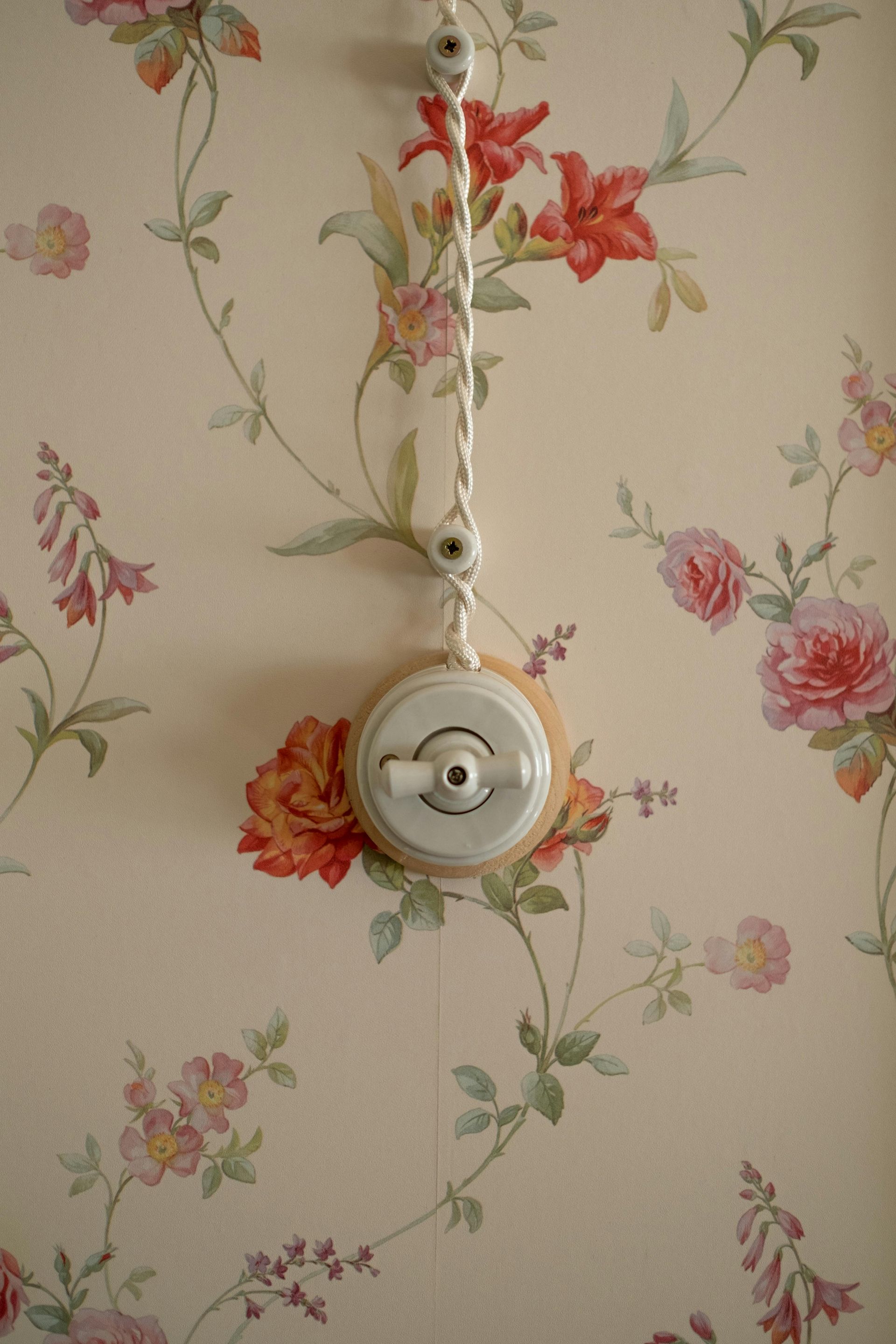
October 10, 2024
Building a new home extension is an exciting journey. The chance to make your home exactly how you want it. Change how you use the kitchen or add a bedroom for a growing family, or a complete renovation. One of the key decisions many people looking at today is whether or not to incorporate smart technology, or rather, which bit of tech to add in. With some really smart things in home automation making things more convenient, energy-efficient, secure, and just more fun, smart home technology is a great option for modern living. As always we like to offer help and advice for any potential customers looking at an extension or build. 1. Smart Lighting Smart lighting is one of the most popular choices for everyone we talk to. Systems such as Philips Hue or LIFX allow you to control your lighting remotely, set schedules, and even change the colour and intensity of lights with a simple voice command or app. They integrate with the likes of Alexa and Siri and are really easy to use for eveyone. Positives : Smart lighting offers convenience and energy savings. Being able to control lights from your smartphone means you never have to worry about leaving lights on when you’re out, which can reduce your electricity bills. Many systems allow you to set lighting scenes, so whether you’re watching a film or hosting a dinner party, your home can be perfectly lit at the touch of a button. Integration with smart assistants like Alexa or Google Assistant also means you can turn lights on or off with your voice, adding another layer of ease. Motion detectors also allow for completely autonomous operation - never again touch a light switch (if you want). Negatives : While smart lighting is a convenient addition, it can be pricey. Installing a comprehensive smart lighting system may require purchasing several smart bulbs or smart switches, which are significantly more expensive than traditional lighting. Additionally, if your internet connection goes down, you may lose some of the system's functionality, though most systems do offer manual overrides. Another consideration is compatibility – not all smart lighting systems work seamlessly with every smart home ecosystem, which could be frustrating if you decide to expand your setup later. 2. Smart Heating and Thermostats Heating your home efficiently is a high priority for most, given the rising costs of energy. Smart thermostats, such as Nest or Hive, have change the way we heat our homes, allowing you to control your heating remotely, set specific schedules, and monitor energy usage in real-time. They even can look at the weather and adapt which we have found to be amazing! Positives : The most significant benefit of smart heating systems is the ability to save on energy costs. Smart thermostats learn your schedule and heating preferences, optimising the temperature to be energy-efficient while still keeping your home comfortable. If you’re away from home for a day or longer, you can easily adjust the heating remotely, avoiding heating an empty house unnecessarily. Even better, coming in from a cold day you can boost the heat to have a toasty warm house. Smart thermostats also provide detailed reports on energy consumption, helping you to identify areas for improvement. Negatives : One downside of smart thermostats is the initial cost. Though they can help reduce your energy bills over time, the upfront investment can be substantial (though its the perfect time if you are replacing your boiler as part of the works). Installation may also require professional assistance if your existing heating system isn’t compatible, adding to the cost. Additionally, while many systems are user-friendly, they can be overcomplicated for those who prefer simplicity. Finally, similar to smart lighting, these systems rely on an internet connection, which could limit their functionality during outages. 3. Smart Security Systems Home security has always been a priority customer, and smart security systems offer enhanced control and peace of mind. From video doorbells like Ring to fully integrated home security systems with cameras, motion detectors, and alarms, smart security allows you to monitor and control your home’s security from anywhere in the world. Positives : Smart security systems provide real-time alerts and remote access, meaning you can check on your property no matter where you are. Many systems also integrate with other smart home devices, such as smart lighting or voice assistants, allowing for a fully interconnected security system. Features like two-way audio on video doorbells mean you can speak to delivery drivers or deter potential intruders even when you’re not at home. For many, the peace of mind that comes with being able to check in on their home via a smartphone app is brilliant. Negatives : While smart security systems offer a high level of protection, they can also be expensive to install, especially if you opt for a comprehensive system. Subscription fees for cloud storage of security footage can add to the ongoing costs. There are also concerns about privacy and data security, as these systems often record sensitive information. If poorly protected, smart security systems could become a target for hackers. Another issue is that reliance on internet connectivity means some features may not function during power outages, potentially leaving your home vulnerable. They are often not insurance rated too. 4. Smart Appliances The inclusion of smart appliances, such as refrigerators, washing machines, and ovens, is becoming increasingly. Some of these appliances offer advanced features such as remote control, energy monitoring, and integration with smart assistants. One York home we did featured a fridge which could create a shopping list or tell you what to make with what is inside! Positives : Smart appliances can make everyday tasks much more convenient. For instance, smart ovens allow you to preheat or adjust cooking settings remotely, and smart fridges can send alerts when you're low on certain groceries. Some smart washing machines offer eco-friendly wash cycles and can be controlled via your phone, meaning you can start a load of laundry while you’re out, ensuring it's ready when you get home. The ability to monitor energy usage is another key benefit, helping homeowners reduce their energy consumption. Negatives : Despite the added convenience, smart appliances come with a hefty price tag compared to their traditional counterparts. Additionally, they are more complex and could be prone to technical glitches. Many of these appliances also rely on software updates to ensure smooth functioning, and outdated software could lead to reduced functionality over time. Compatibility with other smart systems can be an issue as well, making it important to ensure your smart appliances work seamlessly with your chosen smart home ecosystem. 5. Smart Speakers and Assistants Devices like Amazon’s Alexa, Google Home, and Apple’s Siri have become a standard in lots of homes. These voice-activated assistants allow you to control other smart devices, stream music, ask questions, and even control heating or lighting with simple voice commands. Positives : Smart speakers add a level of convenience and accessibility to a smart home. They act as the central hub for other smart devices, allowing seamless control via voice commands. Whether you want to dim the lights, turn up the thermostat, or play your favourite playlist, smart assistants respond almost instantly. Many systems also integrate with third-party services such as Spotify, news outlets, and even home delivery apps, making them a multifunctional tool for modern living. Negatives : The primary downside to smart speakers is their dependence on a stable internet connection. Without it, these devices lose much of their functionality. Privacy concerns are also significant, as smart speakers are always listening for their activation phrase. While companies claim to secure data, some users are uncomfortable with the potential for their devices to record private conversations or store personal data. Additionally, while voice assistants have come a long way in understanding commands, they’re not perfect and may sometimes struggle with accents, including various UK regional accents. If your Yorksire is strong, maby reconsider! Wrap Up Smart technology can bring a lot of benefits when building a new home extension, offering fun convenience, energy savings, and improved security. However, it's essential to weigh these benefits against potential downsides, such as cost, privacy concerns, and reliance on internet connectivity. With some carefullconsideration, and our advice around which technologies fit your needs and lifestyle, you can build a home that is not only smart but also functional and future-proof. Doing this while your home is being worked on is the perfect time as it means doing the job once!

By Nick fothergill
•
September 17, 2024
Why is Hiring a Local Builder with Local Knowledge the best way for a successful home extension? When looking at doing an extension on your home, be that adding a new bedroom, expanding your kitchen, or creating a home office, choosing the right builder is crucial. One of the key factors when looking at options is whether to hire a local builder or a larger, national firm. While both options come with their own merits, there are several reasons why hiring a local builder with strong ties to your community is often the better choice. Understanding Local Planning Permission and Regulations One of the first hurdles you’ll encounter when planning for an extension is local planning permission and building regulations. Different councils have varying rules on what’s permissible in terms of design, size, and placement of home extensions. Some times its not even about rules. We have seen situations where an application in York should technically be acceptable but the home owner was advised to change an aspect. We know most of these challenges from experience, sometimes painful experience! A builder from outside the area might not be familiar with these specific requirements and hurdles, leading to potential delays, costs or even the rejection of your application. Building regs is another similar situation. While it should be black and white, experience says otherwise! Familiarity with Local Architecture and Style Every area has its own distinct style, and it’s important that any extension you build blends harmoniously with the existing architecture of your home and its surroundings. A local builder, who has likely worked on homes similar to yours, will understand these architectural nuances. For example, if you live in a Victorian terrace in the middle of York, a builder with local experience will know how to create an extension that complements the framework whilst meeting modern building standards. They can also provide insight into challenges which need to be overcome. Reliable Local Suppliers and Tradespeople Another advantage of hiring a local builder is their established relationships with local suppliers and subcontractors. Most building projects, especially extensions, require a wide range of materials and skilled workers and some of them will be contractors A builder who operates locally is likely to have strong connections with reliable suppliers, ensuring that high-quality materials arrive on time and at competitive prices. In contrast, builders from further afield may have to source materials from unfamiliar suppliers, potentially resulting in delays or higher costs. Additionally, local builders often have preferred tradespeople they work with regularly. These trusted connections help ensure that each aspect of your extension is handled by someone with a proven track record. This collaborative relationship can lead to better communication, fewer mistakes, and a better final build. Faster Response Times and Greater Accountability Hiring a local builder means that they are never too far away, which can be a real advantage when it comes to scheduling meetings, addressing issues, or making decisions quickly. For instance, if unexpected problems arise during construction—whether it’s a structural issue or a supply chain delay—a local builder can visit the site in a matter of hours rather than days. This proximity also often results in better communication. You’re likely to have more face-to-face contact with a local builder, which can be reassuring and lead to a smoother project. If issues do arise, it’s easier to resolve them when your builder is just around the corner, as opposed to working with someone based miles away who might be juggling multiple distant projects. Moreover, because local builders rely on word-of-mouth recommendations and maintaining a good reputation in the community, they have a vested interest in delivering a high-quality job. They are often more motivated to go the extra mile to ensure that their clients are satisfied. A large, national company may not feel the same level of personal accountability, especially if their reputation isn’t tied to a specific area. Supporting the Local Economy Hiring a local builder isn’t just good for your project—it’s also beneficial for your community. By choosing a builder who lives and works in your area, you’re supporting local businesses and helping to keep money circulating within the local economy. This can have a positive ripple effect, as local builders often source materials and services from other nearby businesses. When you hire a local tradesperson, they’re likely to reinvest their earnings in your area, whether by shopping at local stores, dining at local restaurants, or hiring local services. This not only strengthens your community but also contributes to its long-term vitality and sustainability. The Local Advantage When planning an extension for your home, hiring a builder with local knowledge offers numerous advantages. From a deep understanding of local planning regulations to familiarity with the architectural style of your areas, working with someone who knows the area can lead to a smoother, faster, and more cost-effective project. Their connections with local suppliers and tradespeople, combined with their understanding of regional weather patterns and materials, ensure that your extension is built to the highest standard. On top of that, supporting a local business can contribute to the well-being of your community as a whole. In the end, the decision to go local could be the key to ensuring that your extension is a successful, stress-free addition to your home. AG Developments and Construction are proud to be a local builder and we hope to be able to help you soon!

September 8, 2024
If you are planning an extension to your house you are probably looking at investing a large sum of money into your home. You get the benefit of your new space but you also probably want to ensure you get a return on that investment when you come to sell at some point in the future. These are some great tips to ensure your plans are sensible. Set a Realistic Budget Having a clear budget is crucial. Extensions can be costly, so it’s important to set a budget that covers all aspects of the build, including materials, labour, and any unexpected expenses. It’s wise to have a contingency fund of about 10-15% of your budget to cover any surprises. One of the biggest mistakes people can make is not having enough budget left when it comes to finishing touches. It can make a lovely extension feel low quality. Hire Reputable Professional Being able to name a reputable firm who have done the building work can really help demonstrate value when you come to sell. Having a builder who is of a reasonable size reassures that the work is done right and will be stood by. A 'fly-by-night' one man band does not offer this reassurance at all! Choose Quality Materials Using high-quality materials can add significant value to your extension. They may be more expensive initially, but they often save money in the long run by reducing maintenance costs and increasing the longevity of the build. Think About Energy Efficiency Energy efficiency is an important factor in the UK property market. Incorporating energy-efficient features like good insulation, double glazing, and energy-efficient lighting can make your home more attractive to potential buyers and help reduce your energy bills. Plus when you do an EPC it will look lots better! Create a Cohesive Design Your extension should blend seamlessly with the rest of your home. This means using similar materials and architectural styles. A cohesive design makes the extension look like a natural part of the property, which can be more appealing to buyers. We have seen new rooms look very modern but paired with traditional rest of the house which just didn't work in our opinion. Consider the Neighbourhood It’s important to consider the style and size of homes in your area. If you overextend compared to neighbouring properties, it may not add as much value as you hope. Extensions that are too large or too different from other homes on the street can sometimes be a disadvantage and you just wont get the investment back. Thats find if you want to live in it and make use of that space, but its not if you want to sell up ever. Add Practical Space Focus on adding practical and functional space. Extra bedrooms, larger kitchens, and additional bathrooms are often the most sought-after features. Think about what will make living in the home more comfortable and convenient for the most amount of people Enhance Curb Appeal The exterior of your house is just as important as the interior. Ensure that the new build looks attractive from the outside. This might include landscaping and gardening, painting, or adding features like lighting. First impressions are crucial, and a well-presented exterior can significantly boost your property’s value. The time to do the polish features is when you are doing the main work so dont forget! Get a Good Builder Choosing a reputable builder is crucial. Look for builders with good reviews and examples of previous work - See our projects page to see some examples of what we have done! A good builder will ensure that the extension is completed to a high standard, on time, and within budget.

August 8, 2024
Creating a bright, airy space is a top priority for most people. Maximising natural light in your extension can make it feel more spacious and welcoming. We have delivered lovely, light and modern builds to many people in the York and Pocklington areas. These are the top tips from our experience. Choose the Right Location When planning your home extension, consider its position and where you would like to build. South-facing extensions will receive the most sunlight throughout the day. If possible, plan your extension to take full advantage of this natural light. This is especially important with our location as Yorkshire isn't always the sunniest place! Use Large Windows Large windows are essential for letting in as much light as possible. Floor-to-ceiling windows, bi-fold doors, and skylights are great options. These not only brighten up the space but also provide lovely views of your garden. We use some of the best windows which are eco friendly and retain the heat so you dont compromise in other areas. Install Roof Lights Roof lights, also known as skylights or Velux (which is really a brand), are an excellent way to bring light into an extension. They are especially useful in spaces where traditional windows might not be possible. Consider installing roof lights in flat roofs or even in pitched roofs. They can significantly increase the amount of natural light in your home. Opt for Light Colours The colours you choose for your walls, floors, and ceilings can impact how bright your extension feels. Light, neutral colours reflect light better than dark shades. Whites, creams, and light greys are ideal choices. Additionally, consider using light-coloured furniture and accessories to keep the space feeling bright and open. Use Reflective Surfaces Reflective surfaces can help bounce light around your extension, making it feel brighter. Glossy tiles, mirrors, and glass furniture are all effective ways to increase the amount of natural light in a room. A large mirror opposite a window can reflect sunlight back into the room, enhancing the overall brightness. We have even installed a mirrored splash-back which worked fantastically. Keep Windows Clean It might seem obvious, but keeping your windows clean is crucial for maximising natural light. Dirt and grime can block sunlight, reducing the amount of light that enters your home. Regularly cleaning your windows will ensure they let in as much light as possible. The windows we use are specifically designed to keep cleaner longer. Open Plan Design An open plan design can help light flow through your home more easily. Removing unnecessary walls and using glass partitions can create a brighter, more open space. This layout also allows light from windows and skylights to reach further into your home. We try and minimise signs of steels in place too to keep the flow. Our architect partner is amazing at this! Consider a Conservatory A conservatory is a fantastic way to maximise natural light. These glass structures are designed to let in as much light as possible. They can be a beautiful addition to your home, providing a bright, sunny space to relax and enjoy your garden. In conclusion, maximising natural light in your home extension involves a combination of strategic planning, thoughtful design choices, and regular maintenance. By following these tips, you can create a bright, inviting space that feels larger and more welcoming. Whether you are building a new extension or renovating an existing one, these ideas will help you make the most of natural light in your home.

July 10, 2024
Adding an extension to your home is a significant investment, both financially and in terms of time, effort and stress. It’s not just about increasing the square footage; a well-designed extension can significantly boost your homes value and of course improve you enjoyment of your house. However, to ensure your extension adds value, there are several key considerations to keep in mind. Understand Your Ideas Before you begin planning, think about the purpose of your extension. Are you looking to add an extra bedroom for a child or a master suite for you, expand your kitchen, create a home office, or add a play room. Next look at ways to achieve this whilst either making a space which is useable for other things should you want to sell, or, makes the space highly desirable. Understanding your objectives will help you design a space that meets your needs and appeals to potential buyers in the future. Review the Local Market Understanding the local property market is crucial. Look at similar properties in your area to see what types of extensions are popular and what features buyers are willing to pay a premium for. This research will give you an idea of how much value an extension can add and ensure that your project is in line with market expectations. Critically, it will ensure you dont over build for the area you are in! Consider the Design and Layout The design and layout of your extension should complement the rooms in your house. An extension that looks like an afterthought can detract from your property’s value. Work with an architect (hopefully our recommended architect) to create a seamless integration that enhances the overall use of your house. Think about natural light, flow, and accessibility. A well-lit extension with large windows open space, maybe a roof lantern, easy access to the rest of the house can create a more inviting and spacious atmosphere. Additionally, ensure the materials and finishes match or complement the existing structure to create a cohesive look. Plan for Energy Efficiency Modern buyers are increasingly looking for energy-efficient homes. Incorporating energy-saving features into your extension can not only reduce your energy bills but also make your home more attractive to potential buyers. Consider installing energy-efficient windows, proper insulation, and eco-friendly heating systems. Solar panels, underfloor heating, and smart home technology are also appealing features that can add value. These investments can make your home more sustainable and cost-effective in the long run, which is a significant selling point in today’s market. Obtain Necessary Permissions and Approvals Before you start building, ensure you have all the necessary permits and approvals from your local council. Failing to obtain the required permissions can lead to costly delays and even legal issues down the line. It’s essential to comply with local building control regulations to ensure your extension is legal and safe. Working with a reputable builder who is familiar with local regs can help streamline this process. We have great relationships with a architect and the buildings regs inspectors. Consider the Impact on Outdoor Space While adding more indoor space is beneficial, it’s important not to neglect your outdoor area. A well-designed garden or outdoor living space can significantly enhance your property’s appeal. Ensure your extension doesn’t take up too much of your garden and consider ways to integrate indoor and outdoor living. Features like bi-fold doors, patios, and landscaping can create a seamless transition between your home and garden, making the space more functional and attractive. Budget Wisely Setting a realistic budget is crucial. While it’s tempting to go all out, overspending can lead to financial strain and may not yield the desired return on investment. Carefully consider your financing options and create a detailed budget that includes all costs, from design and materials to labor and permits. Be prepared for unexpected expenses and factor in a contingency budget. This will help ensure your project stays on track financially. A well-planned and executed home extension can add significant value to your property. By understanding your objectives, conducting thorough market research, and working with reputable professionals, you can create a space that enhances your home’s functionality, aesthetic appeal, and market value. Plan wisely, budget carefully, and enjoy the benefits of a beautifully extended home.

June 19, 2024
The desire to blur the boundaries between indoor and outdoor living has become increasingly popular in the UK. This trend, inspired by the need to maximise space and enhance the connection with nature, offers people the best of both worlds. Whilse we dont live in the south the climate in York does allow enjoying the outside for a good portion of the year. By creating a seamless transition between your home and garden, you can enjoy the benefits of outdoor living while retaining the comfort and style of your interior spaces. Here are some tips to help you design a seamless indoor-outdoor living space. 1. Choose the Right Doors The first step in creating a seamless transition is selecting the right type of doors. Bi-fold doors, sliding doors, and French doors are all excellent options that can open up your home to the outdoors. Bi-fold Doors: These doors fold back in panels to create a wide, unobstructed opening. They are ideal for large openings and provide a contemporary look. Sliding Doors: Sliding doors are perfect for creating a continuous flow between your indoor and outdoor spaces. They require less space to open and can be a stylish addition to modern homes. French Doors: For a more traditional look, French doors can provide a charming connection to your garden. They can be double or single doors that open outwards, allowing plenty of natural light to enter your home. 2. Level Flooring Ensuring that your indoor and outdoor flooring is level can greatly enhance the sense of continuity between the two spaces. Using the same or similar flooring materials for both areas can make the transition even smoother. Decking: Wooden or composite decking can be laid flush with your indoor flooring to create a uniform appearance. Paving: For a more durable option, consider using the same paving stones or tiles both inside and outside. Porcelain tiles are a great choice as they are weather-resistant and come in various designs. 3. Consistent Colour Palette Using a consistent colour palette for your indoor and outdoor areas helps create a cohesive look. Choose colours that complement each other and reflect the natural surroundings. Neutral Tones: Soft, neutral tones can create a calming and harmonious atmosphere. They also allow you to add pops of colour with accessories and plants. Natural Materials: Incorporate natural materials like wood, stone, and rattan to enhance the connection with the outdoors. 4. Outdoor Furniture Investing in high-quality outdoor furniture that matches your indoor decor can make your outdoor space feel like an extension of your home. Look for comfortable, durable furniture that can withstand the UK weather. Dining Sets: An outdoor dining set can be perfect for alfresco meals and entertaining guests. Lounge Areas: Create a cosy lounge area with sofas, armchairs, and coffee tables to relax and enjoy your garden. 5. Lighting Proper lighting can enhance the ambience and functionality of your indoor-outdoor space. Consider a combination of lighting options to create the perfect atmosphere. Fairy Lights: String lights can add a magical touch to your garden and are perfect for evening gatherings. Spotlights: Use spotlights to highlight architectural features and plants in your garden. Integrated Lighting: Incorporate lighting into your decking or steps for a sleek and practical solution. 6. Heating Solutions In the UK, the weather can be unpredictable, but that doesn’t mean you can’t enjoy your outdoor space year-round. Investing in outdoor heating solutions can extend the usability of your garden. Patio Heaters: These are a practical option for keeping your outdoor area warm on cooler evenings. Modern heaters look good and are affordable. Fire Pits: A fire pit can be a stylish focal point and provide both warmth and ambience. 7. Greenery and Plants Integrating greenery into your design can enhance the connection with nature. Use plants to create a natural flow between your indoor and outdoor spaces. Potted Plants: Place potted plants around the entrance to your garden to blur the lines between indoors and outdoors. Vertical Gardens: A vertical garden can add greenery without taking up too much space and can be a beautiful feature wall. Creating a seamless indoor-outdoor living space is all about removing barriers and enhancing the flow between your home and garden. By choosing the right doors, maintaining level flooring, using a consistent colour palette, and incorporating stylish furniture, lighting, heating, and greenery, you can transform your living space into a versatile and inviting environment. Whether you're entertaining guests or enjoying a quiet evening, a well-designed indoor-outdoor space can provide the perfect setting for any occasion. For advice, ideas and help in creating your perfect space just ask. We love to see peoples home transformed and love to show examples of what we have done for others in York and Pocklington areas.

June 15, 2024
When it comes to enhancing the natural light in your home, both roof lanterns and Velux lights (also known as skylights) are popular options. Each has its unique features, benefits, and potential drawbacks. Understanding these differences can help you make an informed decision based on your specific needs and preferences. Roof Lanterns What Are Roof Lanterns? Roof lanterns are architectural features that extend from a flat roof, forming a glass apex that allows light to flood into the room below. They are often designed in a pyramid or rectangular shape and can be a striking focal point in a home. Positives: Aesthetic Appeal: Roof lanterns are known for their elegant and sophisticated appearance. They can significantly enhance the architectural style of a home, making a bold statement and adding a touch of luxury. Maximized Natural Light: Due to their size and shape, roof lanterns allow a significant amount of natural light to enter a room. It almost feels like they pull extra light in. This can make spaces feel larger and more welcoming. Increased Ventilation: Many roof lanterns come with the option to include opening vents, which can help with air circulation and temperature control which can be important as the extra glass can make the room hot if not planned for. Enhanced Views: Roof lanterns can provide unobstructed views of the sky, making them ideal for stargazing or enjoying the changing weather. Lovely at night! Negatives: Cost: Roof lanterns can be more expensive than standard skylights. The cost includes not only the unit itself but also the potential need for structural modifications to support the lantern. Installation Complexity: Installing a roof lantern is typically more complex and time-consuming. It often requires professional expertise to ensure structural integrity and weatherproofing. Cleaning and Maintenance: Given their shape and position, roof lanterns can be harder to clean and maintain. They may require regular upkeep to prevent dirt build-up and leaks. Velux Lights What Are Velux Lights? Velux lights are technically the brand name of a type of skylight, designed to be installed directly into the roof. We install Velux and other brands as needed but for simplictiy ill call them all Velux here. They can be fixed or operable, allowing for light and sometimes ventilation to enter a space. They can also have blinds built in, inside the glass! Positives: Versatility: Velux lights come in various sizes and styles, making them suitable for different types of roofs and rooms. They can be installed on sloped or flat roofs, enhancing flexibility. Cost-Effective: Compared to roof lanterns, Velux lights are generally more affordable. They provide a cost-effective solution for adding natural light to a home. Ease of Installation: Installing a Velux light is usually simpler and quicker than a roof lantern. This keeps costs down. Energy Efficiency: Modern Velux lights often feature advanced glazing options that enhance insulation, helping to improve energy efficiency and reduce heating and cooling costs. Negatives: Limited Aesthetic Impact: While functional, Velux lights may not offer the same visual appeal as roof lanterns. They tend to blend into the roofline rather than stand out as a design feature. Restricted Light Entry: Although Velux lights do provide natural light, the amount may be less compared to roof lanterns, especially in larger rooms or spaces that require significant illumination. Potential for Leaks: Like all skylights, Velux lights can be prone to leaks if not installed correctly. Ensuring a proper seal and using high-quality materials is crucial to prevent water ingress. Choosing Between the Two Why Choose a Roof Lantern? Design and Aesthetics: If you aim to create a visually stunning feature in your home that adds a sense of grandeur and luxury, a roof lantern is the way to go. Maximum Light and Views: For spaces that benefit from an abundance of natural light and unobstructed sky views, roof lanterns are ideal. Why Choose Velux Lights? Budget-Friendly: If cost is a significant consideration, Velux lights offer a more economical way to brighten your home. Versatility and Simplicity: For homes with diverse roof types and where ease of installation is important, Velux lights provide a versatile and straightforward solution. Both roof lanterns and Velux lights have their merits and can greatly enhance your living space. The choice ultimately depends on your budget, aesthetic preferences, and specific lighting needs. Whether you opt for the striking elegance of a roof lantern or the practical efficiency of Velux lights, both options can transform your home with beautiful natural light. We are here to offer help and guidance from our years of experiance installing both options in the York and surrounding areas!

June 4, 2024
How to Keep Your House Clean and Protected During Building Works Renovating or extending your home can be an exciting yet challenging experience. While the end result promises improved living spaces and added value, the process itself often brings disruption, dust, and dirt. Keeping your house clean and protected during building works in the UK requires careful planning and proactive measures. Here are some practical tips to help you maintain a semblance of order and cleanliness amid the chaos. 1. Plan Ahead and Communicate Before the building work begins, have a detailed discussion with your contractor. Clearly outline your expectations regarding cleanliness and protection of your home. Establish a cleaning schedule and agree on specific areas that need special attention. This ensures that the contractors are aware of your standards and can take necessary precautions from the outset. 2. Create a Work Zone Designate specific areas of your home as work zones. Isolate these areas with temporary walls or heavy-duty plastic sheeting to contain dust and debris. Zip doors and adhesive zippers can be used to create sealed entry points that prevent dust from spreading to other parts of the house. By confining the mess to a particular area, you can keep the rest of your home cleaner and more liveable. 3. Protect Floors and Carpets Flooring is particularly vulnerable during building works. Lay down heavy-duty protective coverings like builder’s paper, plywood sheets, or plastic sheeting on hard floors. For carpets, consider using carpet protection film which adheres to the carpet and prevents dirt and stains. Ensure these coverings are properly secured to avoid tripping hazards. 4. Use Dust Barriers and Air Filtration Dust is one of the biggest challenges during construction. Invest in dust barriers to seal off doorways and vents. Sticky mats placed at the entrance of the work zone can help capture dust from workers’ shoes. Additionally, using air filtration systems and air scrubbers can significantly reduce airborne dust particles, making the environment healthier and easier to clean. 5. Remove or Cover Furniture and Valuables If possible, remove furniture, electronics, and other valuables from the work zone. Store them in a safe area until the construction is complete. For items that cannot be moved, use dust covers or plastic sheets to protect them from dust and accidental damage. Ensure these covers are properly secured to provide maximum protection. 6. Establish a Cleaning Routine Daily cleaning is essential to keep dust and dirt from accumulating. Coordinate with your contractor to ensure that the work area is swept and tidied up at the end of each day. Invest in a good-quality vacuum cleaner with HEPA filters, which are more effective at capturing fine dust particles. Regularly clean and change the filters to maintain their efficiency. 7. Ventilation and Air Quality Good ventilation can help to manage dust and fumes. Open windows and doors where possible to allow fresh air to circulate. Use exhaust fans to vent out dust and odours from the work zone. Maintaining good air quality not only makes the living conditions more comfortable but also reduces the health risks associated with prolonged exposure to dust. 8. Mind the Details Small details can make a big difference in maintaining cleanliness. Place doormats at entry points to trap dirt before it spreads. Encourage workers to wipe their feet or remove their shoes when entering non-work areas. Use washable or disposable covers for door handles and light switches to protect them from dirty hands. These simple measures can help to minimise the spread of dirt throughout your home. 9. Post-Construction Deep Clean Once the building work is completed, a thorough deep clean is essential. This might involve professional cleaning services, especially for carpets and upholstery. Clean all surfaces, including walls, ceilings, and floors, to remove any residual dust and debris. Pay special attention to air ducts and filters, which can harbour dust even after the visible mess is gone. 10. Regular Maintenance Even after the construction is finished, regular maintenance is key to keeping your home in top condition. Regularly inspect and clean air vents, replace filters, and touch up paintwork as needed. This ensures that your home remains clean and fresh, preserving the results of your renovation efforts. Conclusion Keeping your house clean and protected during building works in the UK requires a combination of planning, protective measures, and regular cleaning routines. By taking these steps, you can minimise disruption, maintain a healthier living environment, and ultimately enjoy the benefits of your home improvement project with less stress and mess.

May 23, 2024
Garden rooms have become an increasingly popular addition to homes, offering versatile spaces that enhance both the functionality and looks of a home. Whether you're looking to expand your living space or create a dedicated area for hobbies, a garden room can provide the perfect solution. We have built a wide range of custom garden rooms and there are the top uses from our experience. Home Office With the rise of remote work since covid, having a dedicated home office has become essential for many people. A garden room offers a quiet, secluded space away from the main house, allowing for increased productivity and focus. Equipped with comfortable furniture, ample storage, and reliable internet access, a garden office can be customised to meet your specific work needs. The natural light and serene garden views can also contribute to a more pleasant and inspiring work environment. Gym or Fitness Studio Creating a personal gym or fitness studio in a garden room can be a game-changer for your health and wellness routine. This space can be tailored to fit your workout preferences, whether you need room for yoga, weightlifting, or cardio equipment. The convenience of having a gym at home eliminates travel time and makes it easier to stick to a regular fitness regimen. Adding large windows or skylights will bring in natural light, enhancing your workout experience. Nothing beats being on the Pelaton looking out over your own garden. Creative Studio For artists, writers, musicians, and other creatives, a garden room can serve as an ideal studio space. The separation from the main house provides a tranquil environment where you can immerse yourself in your work without distractions. Customise the room with appropriate lighting, storage for supplies, and soundproofing if necessary. The close connection to nature can also inspire creativity and provide a calming backdrop for your artistic endeavours. Guest Accommodation A garden room can be transformed into a cozy guest house, offering friends and family a private place to stay. Outfitting the space with a comfortable bed, bathroom, and small kitchenette can create a welcoming and self-sufficient guest suite. This setup provides privacy for both you and your guests, making their stay more enjoyable and comfortable. Additionally, it can be a valuable feature if you often have visitors or need extra sleeping space. This option does require a bit more work to meet building regs but its very much worth it! Entertainment Space Transform your garden room into an entertainment hub for hosting parties, movie nights, or game sessions. More than just a bar or pub. With the right setup, including a large screen, comfortable seating, and perhaps even that bar area done sympathetically, this space can become the perfect spot for social gatherings. The proximity to the garden allows for seamless indoor-outdoor entertaining, making it easy to transition between spaces during events. This versatility can make your home the go-to place for celebrations and get-togethers. A garden room is a versatile and valuable addition to any home, offering a multitude of potential uses that can enhance your lifestyle. Whether you need a dedicated workspace, a personal gym, a creative studio, guest accommodation, an entertainment space, or your own dream idea, a garden room can be customised to meet your needs. Its ability to provide a private, serene, and functional space makes it an excellent investment that can improve your daily living experience.

May 14, 2024
Building an extension on your house or even a garden room is an exciting process. Expanding living space, maybe a nice new bathroom and kitchen, open plan living and potentially increasing the value of your property. However, it can also be a source of tension with your neighbours if not managed thoughtfully. The noise, mess, and general disruption can affect the entire street, making it crucial to maintain good relationships during this time. Here are some ideas to help keep the peace with your neighbours during your home extension. Communicate Early and Often One of the best ways to maintain good relations with your neighbours during an extension is to communicate openly and early. Before the work starts, let your neighbours know about the project timeline and what they can expect. Providing detailed information about the duration of the build, the type of work to be done, and the working hours can help set their expectations and reduce potential frustrations. Regular updates can also keep neighbours informed of any changes or delays, and remind them of bigger works such as cranes if needed, which shows respect and consideration. Maintain a Clean and Orderly Site Building an extension can be messy, but taking steps to keep the area clean can significantly reduce neighbor complaints. Ensure that the builder keep the site tidy and secure, with tools and materials neatly stored at the end of the day. We always ensure a smart site and make efforts to minimise dust and debris. Enclosures or barriers can help contain the construction mess and also improve safety for passers-by. Check out our branded shileding! Building Noise Noise is often the biggest complaint about building works. Schedule noisy work during times that will be least disruptive, typically mid-morning or early afternoon. Avoid early mornings, late evenings, and weekends when most people are at home and would appreciate a quieter environment. Consider Neighbour's Privacy Home extensions, particularly two storey and loft conversions can sometimes overlook a neighbour's property, potentially compromising their privacy. Be mindful of where windows or second-story additions are placed, and consider alternatives or adjustments if they directly overlook your neighbour's yard or home. It might also be beneficial to discuss privacy concerns with your neighbours directly and see if there are any solutions that can be worked into the construction plans. Control Traffic and Parking Construction often means extra vehicles — from workers’ cars to delivery trucks. This can congest local streets and take up parking spaces. We make efforts to plan logistically to minimise disruption. Workers arrive in fewer vans where possible and we schedule deliveries during less busy times of the day. Keeping the street clear helps everyone get along! Offer to Mitigate Impacts If the building work will have significant impacts on your neighbours, consider ways to mitigate them. For instance, if your project involves a party wall or shared fencing, offer to improve or repair the shared structure as part of the project. If prolonged construction is unavoidable, perhaps offer to pay for a window cleaning service for adjacent homes after the project is completed or provide some other form of compensation for the inconvenience. Handle Conflicts Gracefully Even with the best planning and intentions, conflicts can arise. If a neighbour approaches you with concerns or complaints, listen respectfully and try to address their issues promptly. In many cases, simply acknowledging their concerns and demonstrating a willingness to find solutions can diffuse tension and lead to more amicable relations. Celebrate Completion Once your project is completed, a simple gesture like hosting a small celebration or sending a thank-you note to neighbours can go a long way in maintaining good relationships. It shows appreciation for their patience and understanding during the disruptive construction phase. Best of all you can use your new living space to welcome everyone round! Keeping neighbours happy during a home extension, loft conversion or garden room build isn’t just about avoiding complaints; it's about fostering a sense of community and respect. By taking proactive steps to communicate, minimising disruption, and addressing concerns graciously, you can ensure a smoother process and maintain harmonious neighborhood relations. Remember, the temporary inconvenience of construction will pass, but the relationships with your neighbours will continue long after

May 2, 2024
When your home is undergoing building works, whether it's creating an open plan kitchen, extending outwards or even adding an entirely new floor with a loft conversion, unforeseen issues can arise and whats worse is that your home insurance might not cover you. That’s where 'renovation insurance' comes into play. What is Renovation Insurance Renovation insurance is a type of policy specifically designed to cover the risks associated with changes and upgrades to your property. This insurance is different from standard home insurance because it caters to the unique risks present during the building process. What Does Renovation Insurance Cover? Typically, renovation insurance covers physical damage to the structure itself, whether from fire, storm, theft, or accidental damage. It can also provide liability coverage if someone is injured on your property during the renovation. If you have to move out during the works the insurance can also cover you for the home being unoccupied. Lastly, it can cover you incase of damage to a neighbours property. Why Consider Renovation Insurance? Building a home extension is not without risks. Issues include structural damages, unexpected delays due to weather, or even simple accidents that cause significant injury or property damage. Whislt choosing an experianced builder such as us will help minimise risk, there is always some risk and its a simple and cheap way to mitigate that risk The primary benefit of renovation insurance is financial protection. Your home extension or loft conversion involves considerable investment, and having the right insurance in place protects this investment against most unforeseen events. Moreover, it provides peace of mind, knowing that both the assets and persons involved are protected. Won't the builder have insurance? A truested builder should have insurance which will cover their work, tools and cover people at the site however there are nuances which are not covered. There is also no cover for your belongings in the event of theft or the house being unoccupied. Essentially this level of cover replaces your normal household insurance during works. What to Look for in a Policy Coverage limits are crucial—ensure they match the scale of your project. High deductibles might reduce premiums but increase out-of-pocket costs if a claim is necessary. Be wary of exclusions and limitations that might affect key aspects of your renovation. Look at other customer reviews and the ease of dealing with claims, in addition to comparing premiums and coverages. Consulting with an independent insurance broker can provide insights and recommendations tailored to your specific needs. Lastly Understanding and securing the right renovation insurance is a good step for anyone undertaking building works. It safeguards your interests and provides a safety net against the unpredictable.

April 30, 2024
Tea is an important part of fueling any building work! It keeps all the tradesmen fired up and working to maximum capacity! Lets take a look how much is consumed on a typical build: Single Storey Extension A single storey extension might typically include a kitchen refit along with building works. The workforce size depends on the size of the job but lets take an example of 4 people on site each day for 6 weeks. Some times there will be more, sometimes less, and eveyone knows electricians drink the most tea. An average tradesman will drink 3 cups per day. That gives us 30 working days, multiplied by 4 people, multiplied by 3 cups, giving a total of 360 cups and around 100 litres! Two Storey Extension A two storey Extension gives us more room to work in and have multiple rooms being done at the same time. It does typically need additional scaffolding though. For this example we might average 6 people on site and take an extra week. That gives us 35 working days, multiplied by 6 people, multiplied by 3 cups, giving a total of 630 cups and around 190 litres to proper builders tea. Loft Conversion The loft conversion is the wildcard with these sums. The access is typically a lot harder and space an be constrained. Often a bathroom is created and steels are needed up high so it a challenging job requiring additional tea times. Lets estimate an average of 6 weeks work with 4 people typically there but 4 cups in the day to ensure the best work. That gives us 480 cups of yorkshires finest and nearly 150L! It might seem like a lot, you might be planning a trip to costco for bulk tea bags and you might be wondering how many buiscuits get eaten with all this tea, but don't worry! The most important point to note is that being highly experienced builders and caring about the welfare of our trades we ensure a steady supply of tea is available to keep the job on track!
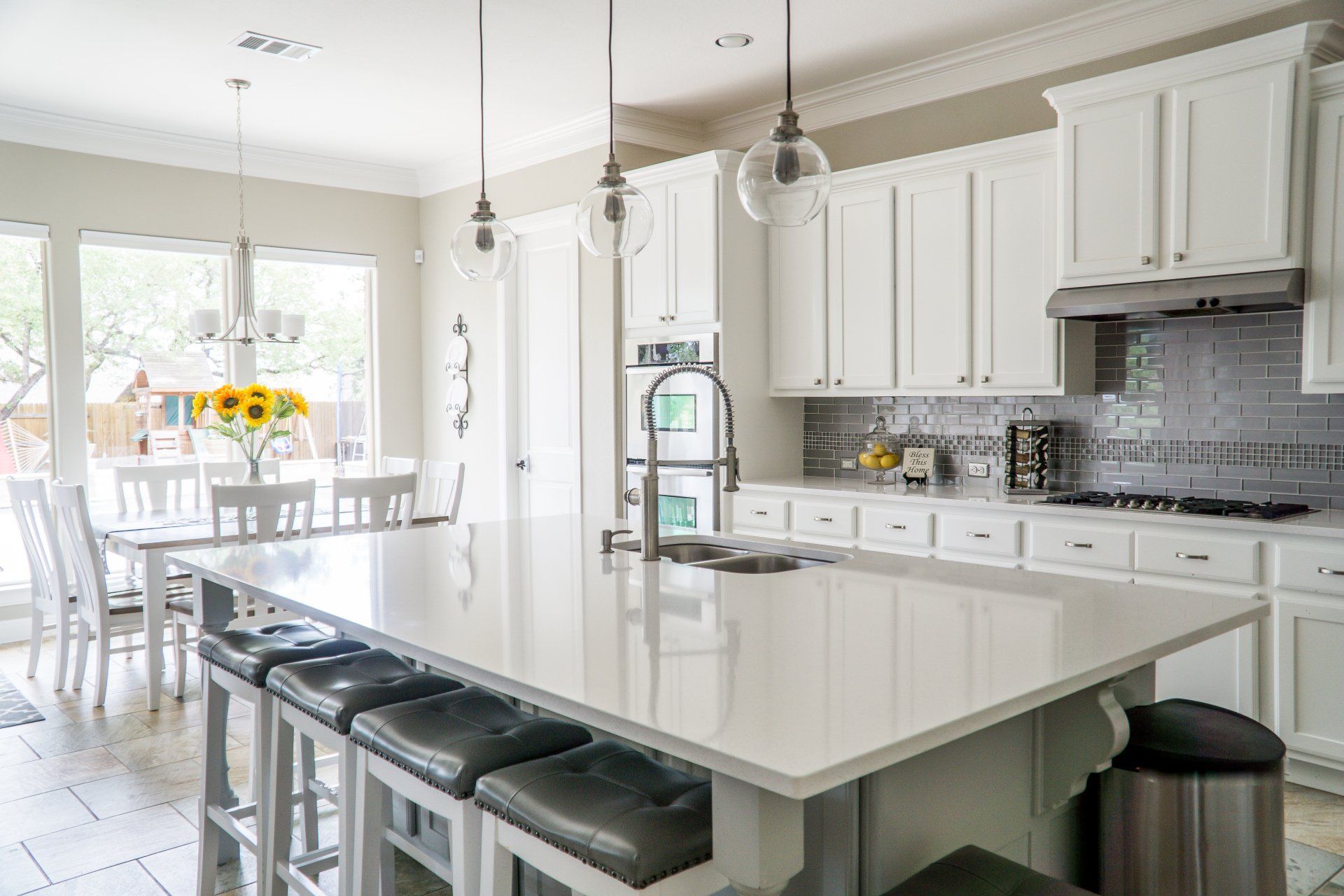
April 29, 2024
An open plan kitchen extension not only revolutionises the way you interact with your new living space but can also increases the value of your home. By blending the kitchen with living and dining areas, it creates a multifunctional space that's perfect for entertaining, cooking, and spending time with family. Its one of the most common extensions we build, including a stunning one in York, detailed in the project - Acomb Extension These are out top five tips we have learned along the way! Plan Your Space Wisely The beauty of an open plan kitchen extension lies in its seamless integration with other living areas. Start by evaluating the available space and decide how you want to use it. Think about the flow between zones – cooking, dining, and relaxing areas should all blend but also allow for functional separation. Use architectural elements like kitchen islands or breakfast bars to naturally divide the space without blocking sightlines. These features not only help define areas but also provide additional workspace and storage. Graham's Tip: Consider the ‘working triangle’ between your sink, stove, and refrigerator. A well-planned layout minimises unnecessary steps while cooking and enhances efficiency. Maximise Natural Light Lighting is crucial in open plan layouts to keep the space feeling airy and welcoming. Aim to maximise natural light through large windows, bi-fold or sliding doors that also enhance garden views. Skylights and lanterns are another fantastic way to flood the space with daylight and can dramatically change the ambiance of your kitchen extension. For evenings, invest in a layered lighting scheme that includes task lighting for work areas, ambient lighting for general illumination, and accent lighting to highlight architectural features or artworks. Smart lighting such as Philips Hue can be a good investment. Alex's Tip: Use reflective materials like high-gloss finishes and mirrored splashbacks to bounce light around the room, making the space feel larger and brighter. Choose Cohesive Décor Maintaining a cohesive décor across your extended space is key to creating a unified look. Select a color palette that complements the existing structures and use it consistently throughout the kitchen and living areas. Flooring is another element that should seamlessly connect all parts of the extension. Hardwood flooring or large-format tiles can work beautifully across different zones, providing continuity and a sense of flow. Out Tip: Use rugs and furniture placement to subtly demarcate different areas while maintaining an overall cohesive design. Invest in Quality Materials Your kitchen is the heart of the home and, likely, your extension will see plenty of use. It pays to invest in high-quality materials that can withstand the wear and tear of daily life. Durable countertops, like quartz or granite, and high-quality cabinetry will ensure your kitchen not only looks good but lasts for years to come. Additionally, consider the practicality of materials; for instance, easy-to-clean surfaces and stain-resistant flooring are must-haves in open plan kitchens. We would happily put you in touch with the best suppliers if you dont have anyone in mind. Grahams Tip: Don’t skimp on hardware. Quality knobs, pulls, and hinges not only add to the aesthetics but also contribute to the longevity of your cabinets and drawers. Integrate Living Elements Finally, to truly make your open plan kitchen extension feel like part of the home, integrate elements that bring life to the space. Indoor plants can add a splash of color and freshness, softening the divide between indoors and out. Consider also integrating features like a wine cooler or a coffee station that reflect your lifestyle and enhance your enjoyment of the space. Our Tip: Custom built-ins, like bookshelves or display cabinets, can help personalize the space and provide practical storage solutions. An open plan kitchen extension can be more than just a renovation; it's a lifestyle upgrade that opens up your home and invites a new way of living. It's exciting! By following these five tips, you'll ensure your new kitchen is not only beautiful and functional but also a perfect fit for your family's needs and activities. Ready to start planning? Embrace the challenge and watch as your kitchen becomes the heart of your newly extended home. We are here to help in York, Pocklington and all the areas surrounding.

April 11, 2024
Foundations are critical for the stability and longevity of any structure. Among the various types of foundations, pad foundations stand out due to their specific applications and benefits. Whilst they aren't the default foundation type they are sometimes needed, We see this often in York some times when doing a two story build, due to the orignal foundations and the make up of the ground. Pad Foundations Pad foundations are a type of shallow foundation that are designed to support individual points of load. These are typically used under columns, piers, or heavy load-bearing structures. A pad foundation is generally square or rectangular in shape, though it can also be circular, depending on the nature of the load and the structural requirements. The primary purpose of a pad foundation is to distribute the load from the building's columns or piers to the soil below. It does this efficiently because it is usually made from reinforced concrete that can be precast or cast in situ. The size and depth of a pad foundation are determined based on the load it has to support and the bearing capacity of the soil. Design Aspects of Pad Foundations Designing a pad foundation requires careful consideration of several factors: Load Distribution : The foundation must be able to distribute the structural load evenly across its surface area to prevent undue stress on any one part of the soil. Soil Conditions : The bearing capacity of the soil greatly influences the design of the foundation. Soils with low bearing capacity may require larger and more reinforced pad foundations - York and some surrounding areas do have low load bearing soils. Frost Line : In colder climates, foundations must extend below the frost line to prevent frost heaving - Not usually an issue around here! Water Table : The presence of a high water table can necessitate specific design adjustments to ensure the foundation’s integrity and durability - this can be a factor depending where you are. When Are Pad Foundations Needed? Pad foundations are particularly useful and necessary in several scenarios: Supporting Concentrated Loads Buildings with heavy concentrated loads such as columns, piers, or heavy machinery require the load to be distributed appropriately. Pad foundations are ideal for these situations as they are specifically designed to handle concentrated loads effectively. Stable and Strong Soil Conditions If the building site has strong and stable soil with adequate bearing capacity, pad foundations can be an economical and efficient choice. These conditions allow for the effective transfer of loads without the need for deeper, more complex foundations like piles or caissons. Cost-Effective Solutions In terms of cost, pad foundations are generally less expensive than other types of deep foundations. They require less excavation and fewer materials, which can significantly reduce the overall cost of the foundation work. Limited Access Sites Sites with limited access or where larger equipment cannot be brought in may benefit from the use of pad foundations, as these can often be constructed with minimal machinery and disruption. Retrofitting and Extensions When existing buildings are retrofitted or extended, pad foundations can be used to support new loads. This is especially relevant in built up areas where adjacent buildings limit the possibilities for extensive foundation work. We will discus the likelihood of any non typical works such as these when we run through your project. We have a lot of experience of solving issues found with dealing with the conditions of Yorks and the surrounding areas history and we are happy to share!
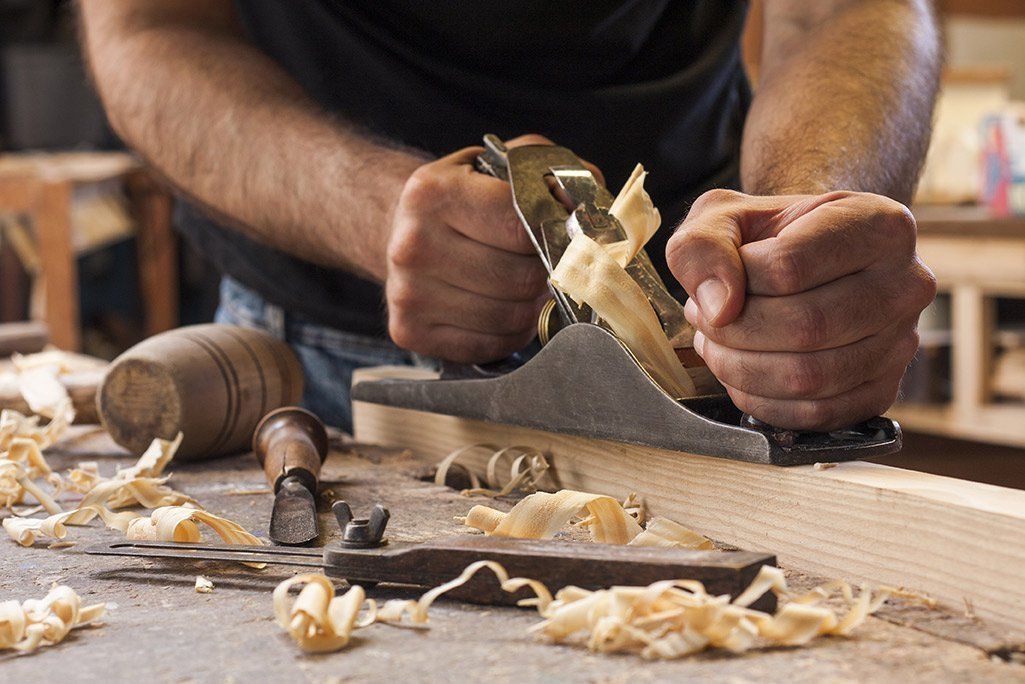
By Edward Dore
•
April 3, 2024
When you're planning to build onto your home, it's an exciting time that promises to improve your space and probably increase the value of your property. However, in among the planning, the budgeting, and the dreaming of the finished result, there's an important administrative step you shouldn't overlook: informing your home insurance company about the upcoming changes. The Importance of Transparency Your home insurance policy was calculated based on the condition and specifications of your property at the time you took it out. Extensions, changes and loft conversions can significantly alter these parameters by increasing the value of your home, changing its structure and adding rooms. Failure to notify your insurer might lead to your policy becoming void or claims being rejected in the future. Risk Assessment Insurance is all about risk, and building projects introduce new variables into the equation. From structural alterations that might affect the building's integrity to extensions that increase its footprint and rebuild cost, insurers need to reassess the risk level of the insured asset. Construction work also brings additional hazards, such as the increased likelihood of theft or accidental damage, which insurers need to account for. Temporary Changes in Coverage Depending on the scale of your renovation or extension, your insurance provider might need to adjust your coverage temporarily. This could involve extending your policy to include cover for building materials, and even the work itself against damage or theft. In some cases, if you're leaving the property while work is carried out, you might need unoccupied property insurance to ensure continuous coverage. Legal and Liability Considerations Significant renovations might also require you to update your liability coverage. If the project involves construction professionals and workers being on your property, you'll want to be protected against potential claims should someone get injured while on your premises. Moreover, if the renovations impact your neighbours or their property, it's vital to have your liability coverage assessed. Communicating with Your Insurer When informing your insurer, be prepared to share detailed plans of your home extension, including the nature of the work (for example kitchen extension, removal of wall, steel work or loft conversion), the expected duration, and the estimated cost. This information will help them understand the scope of the project and adjust your policy accordingly. In some cases, insurers might restrict coverage or even temporarily suspend certain protections. In our experience the houses in York area are regularly being extended so insurance doesn't pose many challenges. What Happens if You Don't Inform Them? its tempting to not say anything. However, failing to notify your insurer about building work can have significant repercussions. Should you need to make a claim during or after the renovation process, you might find that your insurer refuses to pay out, arguing that the risk was not accurately represented. This could leave you facing substantial financial loss, far outweighing any savings from not updating your policy. Adding an extension to you home or converting your loft is an exciting venture, but it's essential to keep your home insurance provider in the loop. Not only does this ensure that your coverage remains valid, but it also protects you against unforeseen costs and complications. In the dynamic landscape of homeownership and property value, being proactive about your insurance coverage is a wise strategy for peace of mind and financial security. The key takeaway is clear: Before embarking on any significant project, reach out to your home insurance company. This simple step can save you a world of hassle, securing your investment and safeguarding your home against the unexpected.

March 10, 2024
The U-value, also known as thermal transmittance, is a critical measurement in the construction and extension of buildings. It quantifies the rate at which heat transfers through a structure's materials, such as walls, roofs, and windows. The lower the U-value, the better the material's insulation properties, making it a key factor in designing energy-efficient extensions and buildings. Lets look into what the U-value signifies, its importance in construction of your new extension, and how it influences the design and sustainability of building extensions. Understanding U-Value U-value measurements are expressed in watts per square meter per degree Celsius (W/m²K). This unit measures the amount of heat that passes through one square meter of a material for every degree of temperature difference between the inside and outside environments. A lower U-value indicates that less heat is lost, showcasing the material's superior insulation capability. Conversely, a high U-value suggests poor insulation, leading to greater heat loss. This sounds complicated but don't worry we will ensure the best performance per cost price! Importance in Construction and Extensions When planning an extension, understanding and applying U-values is paramount for several reasons: Energy Efficiency: A lower U-value contributes to reduced energy consumption by maintaining a more stable indoor temperature. This efficiency cuts down on the need for additional heating or cooling, leading to significant energy savings and lower utility bills. Building Regulations: Many regions have specific building codes and regulations that set minimum standards for U-values in new constructions and extensions. Adhering to these standards is not just about compliance; it's about constructing spaces that are comfortable, sustainable, and cost-effective over time. This is where our experience comes into play. We know the rules and regulations but we also know what works well so whether its York Council or North Yorkshire Council we are on top of giving you the right build Environmental Impact: By optimising the U-value in building extensions, architects and us builders can minimise the carbon footprint of a building. Efficient insulation reduces the demand on heating and cooling systems, thereby lowering the overall energy consumption and contributing to environmental sustainability. In the context of an extension, the U-value informs decisions about materials and construction techniques. For example, choosing windows with low U-values is crucial because glass is typically a poor insulator. Advanced glazing technologies, such as double or triple glazing filled with inert gas, can significantly improve a window's U-value. Insulation materials play a vital role in achieving low U-values for walls and roofs. Options like polyurethane foam, mineral wool, or polystyrene can effectively reduce heat transfer, ensuring the extension is well insulated. Additionally, thermal bridges, areas where heat transfer occurs more readily, must be carefully managed. Design techniques and materials that minimise these bridges contribute to a lower overall U-value. The U-value is a fundamental concept in the design and construction of building extensions, embodying the relationship between thermal efficiency, regulatory compliance, and environmental stewardship. By prioritising low U-values, builders and homeowners can create extensions that are not only comfortable and cost-effective but also aligned with broader sustainability goals. Understanding and implementing strategies to achieve optimal U-values is essential for the future of construction, making buildings part of the solution to energy consumption and climate change challenges. As always we are happy to offer our help and advice and experience in building luxury extensions which are energy efficient.

March 10, 2024
Let's face it, adding a home extension is a thrilling journey. It's like giving your home a new lease on life, more room to breathe, and a chance to inject some of your personality into your living space. But what's a beautifully crafted space if it's not lit right? Enter smart lighting – the game-changer for home extensions. Imagine walking into your newly extended living room, and with just a simple voice command or a tap on your smartphone, the lights adjust to your mood or the time of day. Even as the sun goes down having the light slowly come on! In the world where technology evolves at the speed of light, smart lighting stands out as a beacon of innovation, especially in the realm of home extensions. It's not just about being able to control your lights from your phone; it's about creating an atmosphere, saving energy, and adding a layer of convenience and security to your home. Let's illuminate the path to integrating smart lighting into your home extension, making your space not just brighter but smarter. Choosing the Right Smart Lighting First things first, let's talk selection. Not all smart bulbs are created equal. You've got options from colour-changing capabilities, light temperatures, and bulb fitting types to consider, but the most important puzzle piece is to ensure which ever eco-syetem you plumb for can do everything you want. Compatibility with any current home automation system (think Alexa, Google Assistant, or HomeKit) is also key to creating a seamless smart home experience. It's like picking your players for a team; you want the best fit for your setup. We recommend Hue most often as a great all round system but we are happy to run through your ideas, inject some of our own and help show you which might be the best option for you. Installation: A DIY Dream or a Call for the Pros? Many smart lighting options are as simple as screwing in a bulb and connecting it to your Wi-Fi. However, if you're looking at a more integrated system or need to tweak your existing wiring, calling in a pro might be your best bet. Its a consideration when selecting a system. Whilst we will install everything during your build you will probably want to extend the system to the rest of the house at some point! Creating Scenes and Routines The real magic of smart lighting shines when you start creating scenes and routines. Picture this: a "Good Morning" scene that gradually brightens your room to wake you up naturally, or a "Movie Night" setting that dims the lights just right for that cinema experience at home. With smart lighting, your home not only gets an upgrade in light but in life. Energy Efficiency and Cost Savings Switching to smart lighting isn't just a win for convenience and ambiance; it's a victory for your wallet and the planet too. LED smart bulbs are leagues ahead of traditional bulbs in terms of energy efficiency and lifespan. Plus, the ability to control your lights remotely means never having to worry about leaving lights on by accident. It's smart living in every sense of the word. Lighting the Way Forward Adding smart lighting to your home extension isn't just an upgrade; it's a transformation. It's about taking control of your environment in the most sophisticated way possible, making your space work for you in ways you hadn't imagined. Whether you're looking to boost convenience, enhance security, or simply set the mood, smart lighting paves the way for a brighter, more energy-efficient future and more luxurious time in home your extension.
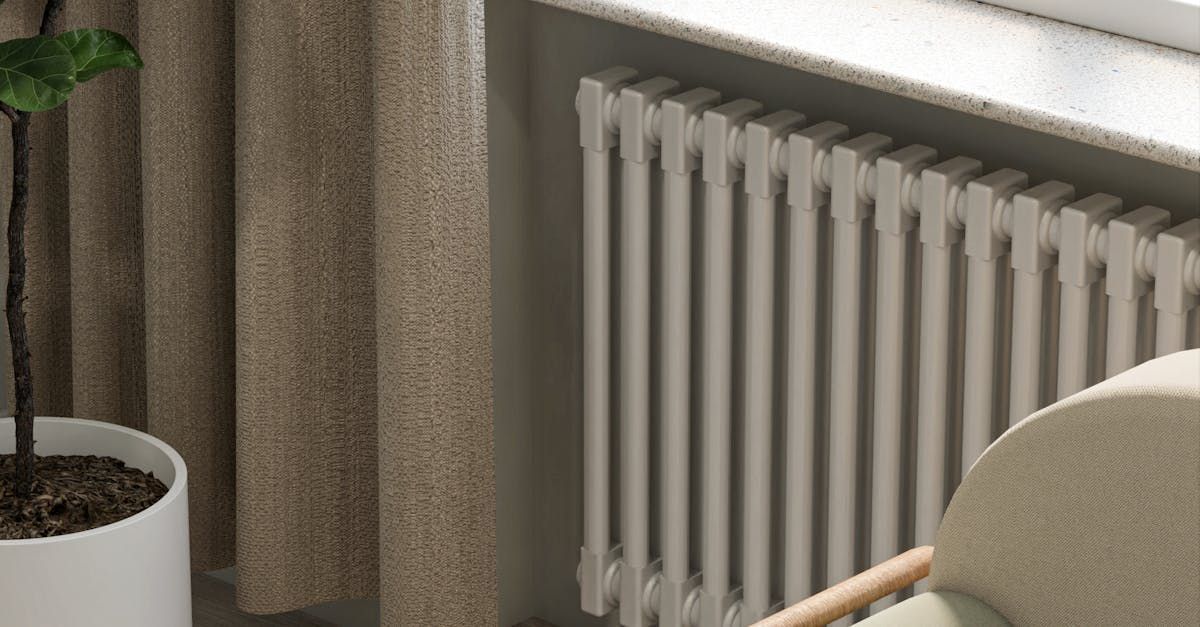
February 29, 2024
Even with the best insulation and a new boiler in your extension or loft conversion, keeping your home warm and being energy efficient are a top priorities. Traditional heating systems have come a long way, and with the advent of smart technology, you now have more control over your home's heating than ever before. Adding some smart to your hoeating can pay dividends in both the ease of use and the luxury levels of your home! Smart Controllers: Taking Charge of Comfort Traditional thermostats are becoming a thing of the past, making way for smart controllers that offer enhanced functionality and energy efficiency. Smart controllers or smart thermostats, allow you to control your heating system remotely through smartphone apps. They learn your heating preferences, adapt to your schedule, and some even offer geofencing capabilities to adjust the temperature based on your proximity to home. Popular choices for smart controllers in the UK include Nest Learning Thermostat, Hive Active Heating, and Tado Smart Thermostat. Each comes with its own set of features, compatibility, and energy-saving capabilities. Different Heating Zones: Tailoring Heat to Your Needs One-size-fits-all heating is no longer the norm, thanks to the introduction of heating zones. Zoning allows you to divide your home into different areas, each with its own temperature control. This not only maximises comfort but also helps save energy by only heating the spaces that are in use. Options for creating heating zones include smart radiator valves, underfloor heating with individual room control, and multi-zone smart thermostats. With these solutions, you can customise the temperature for different rooms or areas of your home, ensuring optimal comfort without wasting energy. Smart TRVs: Precision in Every Room Smart Thermostatic Radiator Valves (TRVs) take heating zone control to the next level by allowing you to manage the temperature of individual radiators in your home. These devices replace traditional radiator valves and enable you to set specific temperatures for each room. Leading smart TRVs in the UK market include the Honeywell Home HR92, Netatmo Smart Radiator Valves, and Drayton Wiser Radiator Thermostats. With these devices, you can create a personalised heating schedule for each room, reducing energy consumption and providing comfort where and when it's needed. Conclusion: Investing in smart heating solutions not only enhances your comfort but also contributes to energy efficiency and cost savings. Whether you opt for a smart controller to manage your entire home, implement different heating zones, or install smart TRVs for precision temperature control, the options available in the UK market cater to various needs and preferences. By adding smarts to your heating system, you're not just staying warm; you're embracing a more intelligent and sustainable approach to home heating. We would be happy to run through options and make the most of you new build. This is the time to do it! Stay cozy, stay smart!

February 27, 2024
The idea of creating additional space in your home often involves the consideration of an house extensions. We see this often in York where the 1930's semi detached houses have been added on to. These are sometimes small extensions and dont add the room or function to the house that a better extension could. The question posed is often around the best way to either add on to or replace the current extension with a more modern and better build. Assessing the Existing Extension Before diving into plans for a new extension, it's crucial to assess the condition and purpose of the existing one. Evaluate its structural integrity, functionality, and whether it still meets your needs. If the current extension is outdated or too small, you may opt for a complete replacement. On the other hand, if it's still in good condition but insufficient, building a complementary extension might be the ideal solution. Options for Building Alongside If your existing extension is in good shape and doesn't cover the entire available space, consider building a new extension alongside it. This approach allows you to preserve the functionality of the existing extension while expanding your living space. The new extension can serve a different purpose, such as a spacious kitchen, a home office, or an additional bedroom. This will keep the costs and disruption down to a minimum too. Replacing the Existing Extension Sometimes, the best course of action is to replace the existing extension altogether. This might be necessary if the current structure is outdated, in poor condition, or if your lifestyle has evolved, requiring a different type of space. Replacing the extension provides a blank canvas for creating a modern, functional, and customised living area that perfectly suits your current needs. This is sometime necessary if the plan is to build above the current extension too as footings may not be strong enough. Planning Permission Considerations Before embarking on your extension project, it's essential to understand the planning permission requirements. In many cases, building an extension within the footprint of the existing one might fall under permitted development rights. However, if you're replacing the extension or significantly altering its appearance, you may need to seek planning permission. Why not speak to us as we have vast experience to share. We have dealt with this many times in the York and Pocklington areas. Check with your local planning authority to ensure compliance with regulations. Having a clear understanding of the planning process will help you navigate any potential obstacles and ensure a smooth extension project. Design Synergy Harmonising the design of the new extension with the existing one is crucial for aesthetic appeal and structural integrity. Consider architectural elements, materials, and colour schemes that complement the current extension while achieving a cohesive and unified look. This will enhance the overall visual appeal of your home and create a seamless transition between the existing and new living spaces. Building a house extension when an existing extension is already in place is not only possible but also an exciting opportunity to enhance your home. Whether you choose to build alongside the existing extension or replace it entirely, careful planning, assessment, and adherence to planning permission regulations are key. By taking a thoughtful approach to design and construction, you can transform your living space and create a home that perfectly aligns with your current lifestyle and preferences.
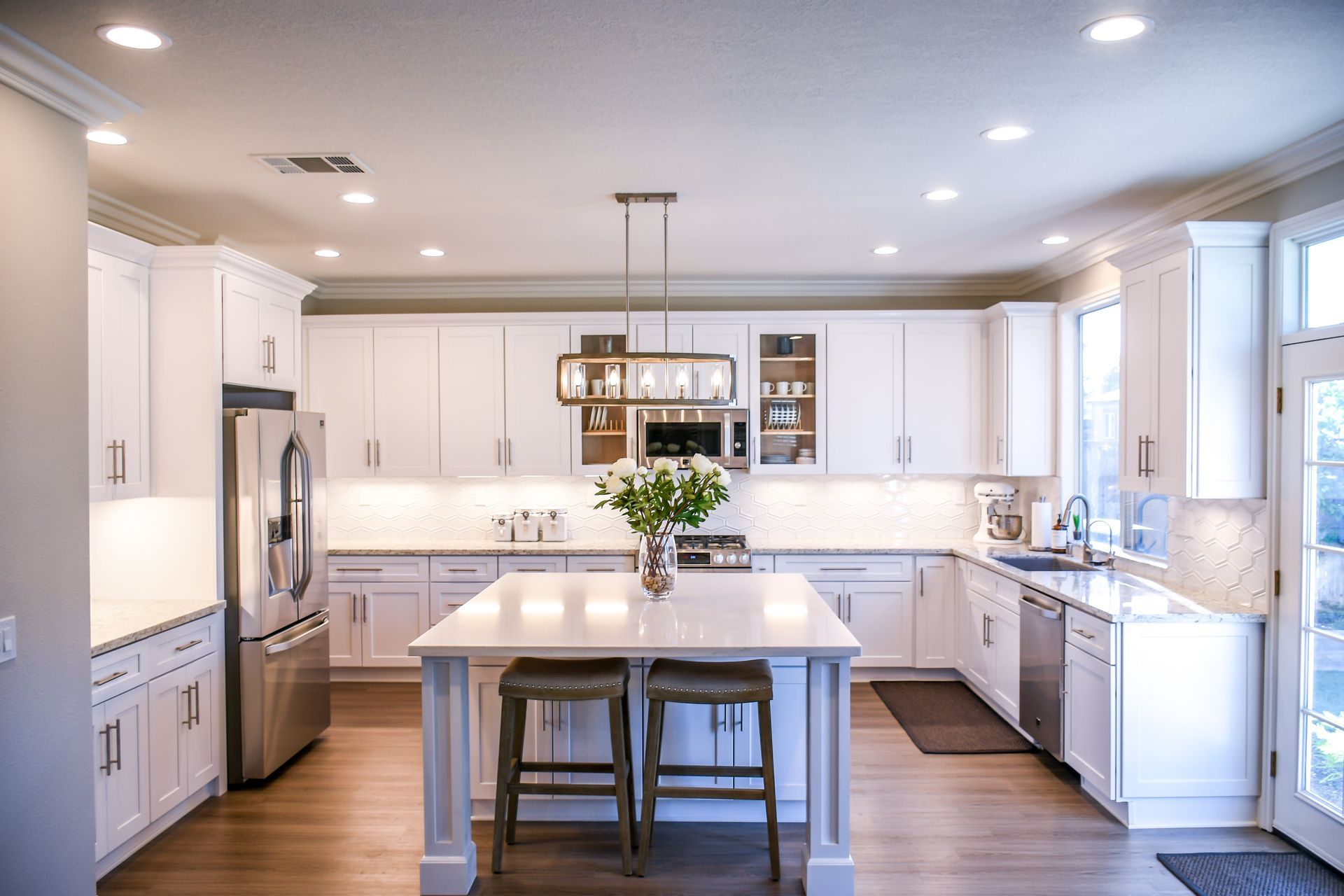
By Kieran Jones
•
February 15, 2024
From smart home technology to luxurious finishes, here's a guide to help you make informed choices for your dream home extension Smart Home Technology In the era of connectivity, integrating smart home technology can revolutionise the way you interact with your living space. Control lighting, thermostats, security systems, and more remotely, creating a home that adapts to your lifestyle. Energy Efficiency We champion being green so low energy appliances and lighting are a default but investing in triple glazing, the best roof lanterns and additional insulation can quickly pay dividends. Home Security Systems After having a wonderful home extension built nothing beats the reassurance of having your entire home secured. Simply build the sensors in at the time of works and enjoy ongoing security. Whilst York, Pocklington and surrounding areas are not high crime it always helps to feel safe. Luxury at Every Turn: Upgraded Flooring and Finishes Upgrade your living spaces with high-quality flooring, countertops, and finishes. Even chrome sockets can make a huge difference to the final finish. Not only do these enhancements improve aesthetics, but they also contribute to the long-term value of your home. We are happy to help demonstrate the options and offer our experience. Curb Appeal: Landscaping and Outdoor Lighting Make a lasting first impression with professional landscaping and outdoor lighting. A well-designed exterior not only enhances curb appeal but also complements the overall aesthetics of your home and makes the whole experience of your new living space. Home Entertainment: Bring the Theatre Home Transform your living room into a home theatre with a state-of-the-art entertainment system. Built-in sound systems can create a cinematic experience within the comfort of your own home. As you start on this journey of transforming your home into the perfect home, carefully consider these optional extras to tailor your living space to your unique lifestyle and preferences. Prioritise based on your needs and budget, and consult with your builder to ensure that all agreed-upon extras are included in your contract. With the right choices, your new home will not only meet but exceed your expectations, providing a haven of comfort, luxury, and functionality for years to come.

January 15, 2024
Deciding whether to move or extend your current home can be a daunting task. You need to fully assess the options and implications of each option, and the decision ultimately depends on various factors. We have helped a number of home owners in the York area go through the options. Some decided to go ahead with works while others decided it was not the best option for their circumstances. Space Requirements: Evaluate your current and future space needs. If your family is growing or you find yourself in need of additional rooms, an extension may be the perfect solution. For a few months of works you avoid moving to a new unknown area with new neighbours and different amenities and transport and a whole host of changes. However, if you're seeking a change of scenery and your current location is no longer ideal, moving might be the better choice. Budget Constraints: Budget is a crucial factor in the decision-making process. Extensions can be expensive, and costs can quickly escalate if unexpected issues arise during construction. Making your extension the best it can be can be expensive and whilst an extension can be profitable, if you make it the best for your situation the profit may not be there. On the other hand, moving involves other expenses such as stamp duty, legal fees, and removal costs. Borrowing to do an extension can be more complicated too. Consider your financial situation and weigh the upfront costs against the long-term benefits of each option. Emotional Attachment: Consider the emotional attachment you have to your current home. If you have a deep connection to your neighbourhood, local community, and your home itself, it might be challenging to leave. However, if you're open to change and see your home as an investment rather than a sentimental space, moving could provide a fresh start. Planning Permission and Regulations: Before deciding on an extension, be aware of local planning regulations and permissions required. We know what is typically allowable in the York and Pocklington areas but there can always be issues. If obtaining planning permission seems daunting, or if your property is in a conservation area where restrictions are tighter, moving to a new home might be a more straightforward and lower stress option. Future Property Value: Consider how each option might impact the future value of your property. A well-executed extension can add significant value, but the location also plays a crucial role. Its no good making your home a 5 bed mansion in an area full of 2 bed terrace houses. Research property values in your current area and potential new locations to make an informed decision. Market Conditions: Be aware of the current property market conditions. If the market is buoyant, selling your home might be more appealing, as you could potentially make a profit. On the other hand, if the market is slow, it might be wiser to invest in your current property through an extension. Whilst we are not estate agents we do have a finger on the pulse of the market in the York and Pocklington and surrounding areas. Ultimately, the decision to move or extend your home depends on a combination of personal, financial, and practical factors. Carefully weigh the pros and cons of each option and consider seeking advice from property professionals. Whether you choose to create more space within your current walls or embark on a new property journey, the key is to make a decision that aligns with your lifestyle, budget, and future goals.

January 2, 2024
When planing on a home extension or renovation, the decision to hire individual building trades, such as electricians and plumbers, versus opting for a comprehensive builder who can handle multiple trades under one contract is a critical consideration. While the former might seem like a straightforward approach and a way to save on the budget, it often comes with a set of challenges and drawbacks that can actually lead to increased costs and stress for homeowners. 1. Coordination Challenges: One of the primary issues with hiring individual building trades is the need for meticulous coordination. Each trade, whether it's electrical work, plumbing, or carpentry, operates on its own schedule and may have conflicting timelines. Coordinating these disparate schedules can be a logistical nightmare, leading to delays and disruptions in the construction process.. A comprehensive builder, on the other hand, manages the entire project, ensuring seamless coordination between various trades and preventing unnecessary setbacks in the time line. 2. Increased Costs: Employing individual building trades can result in higher costs due to several factors. Firstly, each trade will charge separate fees for their services, leading to a cumulative cost that often surpasses the cost of a bundled contract with a builder. Additionally, miscommunication and coordination issues may result in mistakes, rework or simply time on site where trades cant work, driving up the overall project cost. A comprehensive builder, by contrast, can provide a more accurate and competitive estimate for the entire project, often leading to cost savings. 3. Time-Consuming Selection Process: Finding then selecting reliable and skilled individual tradespeople for each aspect of a construction project can be a time-consuming process. The home owner must conduct separate quotes with trades people, check references, and negotiate terms for each trade, adding complexity and stress to the process. By hiring a builder that does it all you streamline the process, and get a whole project managed in one point of contact. 4. Accountability Issues: When hiring individual trades, accountability for the entire project can become blurred. If issues arise, finger-pointing between different trades may occur, making it challenging to determine responsibility and find timely solutions. Often a compromise will need to be found and often that will cost the home owner. A comprehensive builder takes on the responsibility of the entire project, ensuring accountability for all aspects and facilitating a smoother resolution to any problems that may arise. 5. Seamless Project Management: A comprehensive builder brings an inherent advantage in terms of project management. They have the expertise to plan, organise, and execute all aspects of a construction project cohesively. This eliminates the need for homeowners to act as intermediaries between various trades and allows them to enjoy a more hands-off approach to project oversight, reducing stress and allowing for a more enjoyable home extension building process. While the allure of hiring individual building trades may seem practical at first glance, the challenges and pitfalls associated with this approach often outweigh the benefits. Opting for a builder who can manage multiple trades under one job not only streamlines the construction process but also tends to be more cost-effective and less stressful for homeowners. The peace of mind that comes with entrusting a skilled builder to oversee the entirety of the project makes the decision to go comprehensive a smart investment in the long-term success of any construction endeavor.
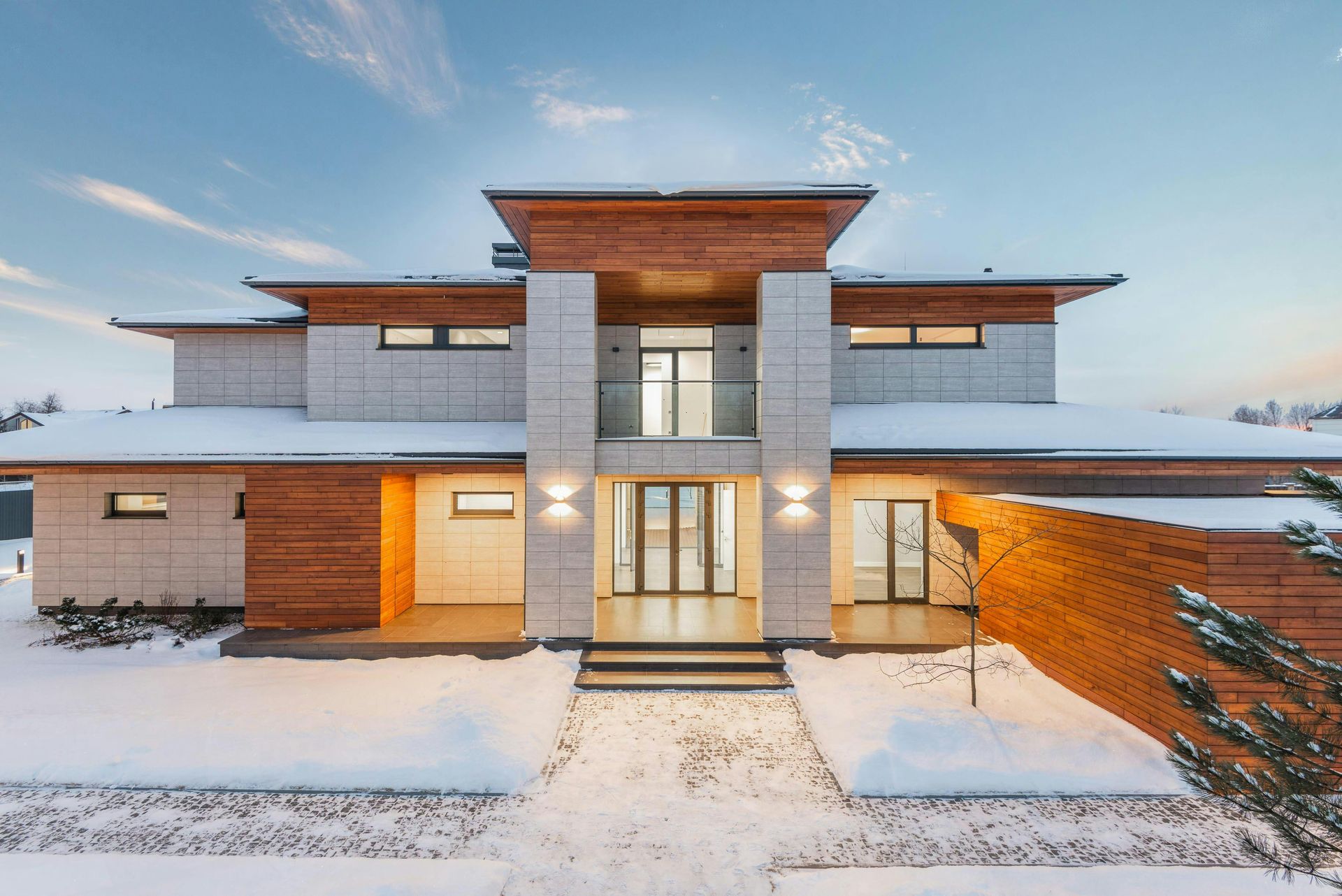
December 2, 2023
The winter months often bring challenges for living with building works. Cold and wet weather can significantly impact daily routines and comfort levels. Whether you are having a home extension in Strensall with lots of groundworks creating mud and mess, a loft conversion in York opening the roof, or something in between building works can create mess, let the cold in and cause water management challenges. Here at AG Developments we are used to making any home extension work liveable during the bad weather but these are our top tips for how to cope with your extension and the weather. Stay Informed and Be Flexible: Weather Updates: Keep a close eye on weather forecasts and work with your builder, hopefully us, anticipate activity and plan accordingly. Being aware of upcoming work can help you schedule your day and minimise inconveniences. Flexible Plans: Stay flexible with your plans, especially if the building activities are weather-dependent. Rain and damp is the most common issue to stop works, but extreme cold and winds can affect the work which can be done too. Knowing that disruptions may occur allows you to adjust your schedule and activities accordingly. Prepare Your Living Space: Weather-Proofing: Ensure the areas which aren't affected in your home are well-insulated and weather-proofed. Seal windows and doors to prevent drafts, and address any existing issues to create a more comfortable indoor environment. Whilst we will do our best to seal the works off and protect the areas not being worked on its always best to be prepared to assist too. Protect Outdoor Areas: Cover outdoor furniture and secure loose items in your garden to shield. This proactive step helps prevent potential damage during construction. Daily Living Strategies: Noise Management: Building a home extension can be noisy, so consider if working from home or being in the house is practical. If you will be around the works using noise-canceling headphones or earplugs to create a quieter living space. Children especially can be upset by loud tools so think if there are activities away from the house that could be done. Create Indoor Retreats: If possible designate cozy indoor spaces where you can retreat from the disruptions. Create a comfortable corner with homely treats to rest in. Safety and Well-being: Safety Measures: Ensure the safety of yourself and your family by following any safety guidelines provided by the builder. During the day tools and materials are in use so ensure children are supervised at all times. Let your builder know if you need to be in the space which is being worked on Communication: Stay Informed: Keep an open line of communication with your builder. Know what is happening but also let your builder know if you need to be around the house so they can try and accommodate you. We always try and work with customers to ensure their house is useable and your life is maintained during any building works. Living around a building site is never fun. It's a necessary part of the works to get to the end result but we appreciate the challenges of living through the works, especially in the cold and wet weather. By taking a few steps and working with your builder you can make life a lot more pleasant.

November 24, 2023
If you're planning a home extension one of the things you may need to consider is whether your existing water boiler will be able to cope with the increased demands of the new space. Here are some things to keep in mind: 1. Check the specifications of your existing boiler: The first step in determining whether your boiler can handle the extra load is to check its specifications. Look for the output rating of the boiler, which will be in kilowatts (kW). This will tell you how much hot water the boiler can produce in an hour. 2. Calculate the hot water demand of the new space: Next, you'll need to calculate the hot water demand of the new space. This will depend on a variety of factors, such as the number of bathrooms, people living in the house, and the type of heating system you have such as radiators or underfloor heating. The house location also plays a part, a house in York might be significantly more sheltered and thus warmer than than an exposed detached house in the Yorksire countryside! 3. Compare the boiler output with the hot water demand: Once you have the hot water demand figure, you can compare it with the output rating of your boiler. If the boiler is capable of meeting the new demand, you're good to go. However, if the demand exceeds the output rating of the boiler, you'll need to consider upgrading to a larger boiler. 4. Consider other options: If upgrading your boiler isn't an option, there are other solutions you can explore. For example, you could install a separate hot water cylinder to meet the demand of the new space. Alternatively, other technology such as electric underfloor heating, heat pumps or solar can help. 5. Seek professional advice: Finally, it's always a good idea to seek professional advice when it comes to your heating system. We would always consult our on staff engineers when planning a build but you might want to look at an assessment prior, this way you know what to look for!
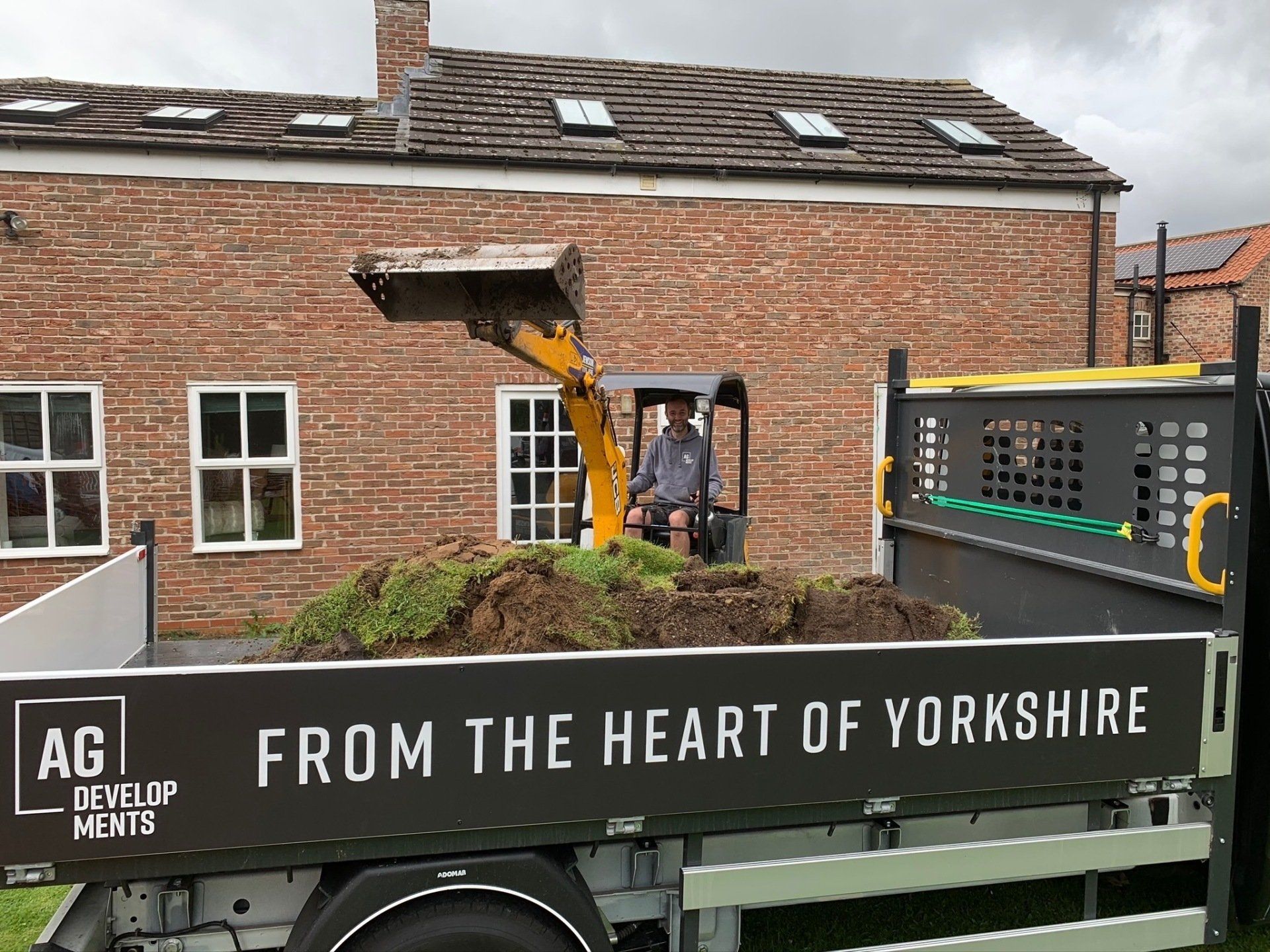
November 20, 2023
Planning an extension can be a daunting task, but with the right approach, it can be a smooth and rewarding process. Whether you’re looking to add space to your home or increase its value, there are a few key steps to take before you start building. Before you begin, it’s important to understand that planning an extension is a complex process that requires careful consideration of various factors. These include your budget, the local planning regulations, and the structure of your existing home. Here are some tips to help you get started: Define your goals The first step in planning an extension is to define your goals. Are you looking to add more space to your home? Do you want to increase its value? Or are you simply looking to improve your living conditions? Once you’ve defined your goals, you can start exploring your options and identifying the best course of action. Set a budget Once you have a clear idea of your goals, it’s important to set a budget for your project. This will help you stay focused and avoid overspending. Be sure to take into account all the costs associated with the project, including design fees, planning application fees, building costs, and any unexpected expenses. Nice touches such as USB sockets, smart lighting or high end materials add to the overall build but also add to the budget. Consider the local planning regulations Before you start building, it’s important to familiarise yourself with the local planning regulations. These regulations vary from one area to another, so be sure to check with your local planning authority to find out what rules apply to your project. Some common restrictions include height limits, setbacks, and the materials and colours that can be used. York in particular can have some picky issues with windows where other locations do not! Choose a design Once you’ve defined your goals, set a budget, and familiarised yourself with the local planning regulations, it’s time to choose a design for your extension. There are many different design options to choose from, including traditional, modern, and contemporary styles. It’s important to choose a design that complements the existing structure of your home and meets your needs and preferences. Hire a professional Once you’ve chosen a design, it’s time to hire a professional to help you with the planning and building process. This could include an architect, a builder, or a project manager. Be sure to choose someone who has experience with similar projects and can work within your budget and timeline. Obtain the necessary approvals Before you start building, you’ll need to obtain the necessary approvals from your local planning authority. This typically involves submitting a planning application and obtaining a building permit. Your professional can help you with this process and ensure that all the necessary documentation is in order. Check out another article we have about Building regulations Start building Once you’ve obtained all the necessary approvals and permits, it’s time to start building your extension. Be sure to work closely with your professional to ensure that the project is completed on time, within budget, and to your satisfaction. Planning an extension can be a complex and challenging process, but with the right approach, it can be a smooth and rewarding experience. By utilising the right professionals it can be a relativly easy process. We have years of experiance dealing with the paperwork and fine details to ensure a very stress free build and we would love to help build your extension!

November 6, 2023
We explored Building Regulations in another article Here we will look at a key decision to make. Whether to use Full Plans or A Building Notice. A Building Regulation Full Plans application is where plans, detailed specifications, and if appropriate, structural calculations are submitted to the council. These are checked to make sure that they meet the regulation requirements and if necessary you will be asked to give more information or to alter the plans. Advice and assistance is available to help you meet the requirements of the regulations. When your submission is satisfactory formal approval is given. In many cases it is possible for a Conditional Approval to be issued, leaving some items to be dealt with at a later date. In rare circumstances plans cannot be approved and a Notice of Rejection will be issued detailing the items of non-compliance and the plans will need revisiting. The Council will issue a decision within a maximum of five weeks (or two months if you request an extension of time to allow more information to be covered). When works on site start you can be sure that, provided the builder builds in accordance with the approved plans, the works will comply with the Building Regulations. A Building Notice is a written notice that you intend to carry out building work and does not normally mean that you have to submit detailed drawings. More information may sometimes be requested by the Building Control Surveyor to ensure that your work is in line with the regulations. A Building Notice is more appropriate for minor residential alterations and/or extensions. No formal approval of plans is given and the work is assessed mainly through site inspection. As no prior approval is given you must be confident that the work undertaken on site will comply or you risk having to correct it at the request of the council. This is where its absolutely critical to use a reputable builder with the needed skills, experience and knowledge. You can commence building work 48 hours after giving the Building Notice, although you must tell the Building Control Officer when the work is being done to enable inspections to be carried out. The advantage of using a Building Notice is the lack of having to have full, and usually quite expensive, plans drawn up. The saving can be substantial. The downside of a Building Notice is that there can be delays to have an inspector review the works and of course if the builder doing the works builds something which is not up to standards that work will need remediation. That can be costly!
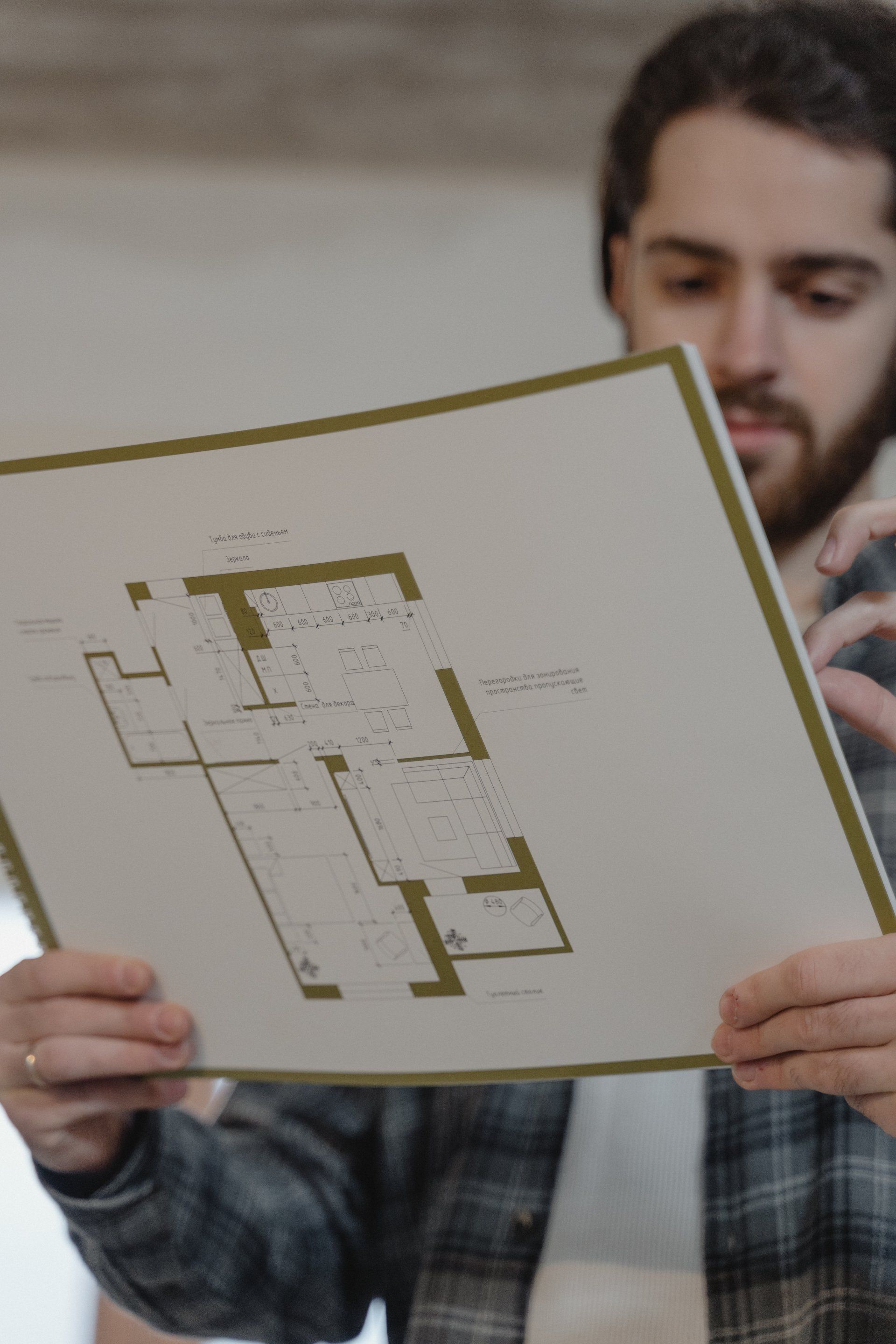
October 27, 2023
What are Building Regulations? Building Regulations are a set of basic standards for the design and construction of buildings. They exist to ensure the safety, health and welfare of people who use the buildings. They also include requirements and guidelines to ensure that energy is used efficiently and conserved where appropriate and that facilities are accommodating people with disabilities. Before you start any building work you need to check if you need building regulations approval! Whilst you as the building owner are ultimately responsible, any builder doing a home extension should be able to help demonstrate they are abiding by the regulations and getting the correct sign off for works. What is the process for Building Regs during an extension build? There are set stages for ensuring any works meet building regs. The exact stages depend on the works. For example a loft conversion does not have the same steps as wrap around ground floor extension or a kitchen extension. There are also two ways to achieve building regs. These are full plans or a building notice. We will explore the full details of this in another article but the short version is full plans require detailed drawings where as a notice allows for lesser detailed drawings but more frequent checks. Firstly, draw up plans for the works that meet Building Regulations. These will consider things like fire safety, ventilation, insulation, drainage and possibly structural calculations. Next the builder will submit a building regulations application to the local authority along with the plans, specifications, and appropriate fee. This notifies them of the work and allows them to check it meets regulations. Your local authority will review the plans and specifications. They may come back with questions or request amendments to bring the extension up to code. During the build an inspector will want to v iew the work at various stages to ensure compliance. These inspection stages may include after foundations are complete, after first fix (electrical, plumbing, etc.), and after second fix (wall, roof). After the final inspection, if all works meet Building Regulations, the local authority will issue a Building Regulations Completion Certificate. This formally approves the finished extension, loft conversion or works. The builder can use private inspectors to pass the works, it just depends on the works, how busy the authority inspectors are and how the work is progressing. Do I need Building Regulations? As a rule of thumb, if you are planning to carry out building work on your house, it will need building regulations approval. For example ,the following works would require building regs: The erection or extension of a building. An alteration involving work which will temporarily or permanently affect the ongoing compliance of the building, service or fitting with the requirements relating to structure, fire, or access to and use of buildings. Installing replacement windows using a builder or window company which is not FENSA registered. The installation or extension of a service or fitting which is controlled under the regulations. (eg gas) The insertion of insulation into a cavity wall. The underpinning of the foundations of a building. When you want to change the building’s fundamental use. Renovation of a thermal element. Change of a building’s energy status. Building regulations can sound scary. They are certainly important and will be critical when you come to sell your house, and of course they ensure your home is safe, but if you have selected a builder with the right experience and qualifications, getting your extension or works certified will be no issue at all.

October 8, 2023
When working on a new extension or loft conversion it's standard to need new windows for the new space, however, it can be beneficial to use this opportunity to renew the windows in the house and benefit from a better and new window type throughout. Even if you don't need to do that it's wise to carefully assess the options for the newly built extension Here we will take a look at options and our experience of using them and what they are like to live with long term! Wood Frame Windows Wooden windows come in a variety of hard and soft wood options, each with unique benefits and costs. These windows can be customised to fit your specific extension and house, either through a set of standard profiles or one-of-a-kind bespoke designs. Whether you're looking for a standard size or something unique, wooden windows can be tailored to suit. Energy efficiency is no concern either as we have fitted many with seal units (double glazing with energy-saving gas between the panes). Pros: Authentic real wood look and feel Softwood can be cost-effective, but won’t last as long as hardwood Can be stained or painted in a colour of your choice Suitable for modern or traditional homes Environmentally friendly Good thermal insulation Hardwood can last longer than other window frame materials, up to 60 years. Cons: High maintenance – will need regular repainting/treatment. If this doesn't happen they will fail! Hardwood can be expensive, but benefits from extended longevity compared with softwood Softwood will need replacing more regularly than hardwood (due to it being exposed to the UK weather - even being in the vale of York doesn't protect them from the rain!) UPVC, Vinyl OR Plastic Windows Plastic windows are often a popular choice due to their affordability and are now available in a range of colours and finishes achieved with either spray paint or foil laminate. Some of the less costly plain white plastic windows can look less attractive and may degrade faster than the more premium coloured foil laminated options. When looking at uPVC window systems, there is a huge difference between the standard white ‘budget’, characterless uPVC windows and the more premium uPVC systems where there is a considerable choice of colours, finishes and styles – even suited to period properties. As with anything you need to compare the options and costs to find a solution to fit your needs. Pros: Can be the most cost-effective solution – although the plain white versions with little character may not be the most aesthetically pleasing Low maintenance Wide range of colours available Custom sizes Cost-effective solution for replacement window market – some have been designed specifically for period properties Section depths make installation on replacement windows straightforward Cons: The plain white options can look cheap Can degrade and is not easy to repair Are less environmentally friendly than alternatives White windows can discolour Saturated product Manufacture size limitations Aluminium Windows Aluminium is a very common type of window frame, suitable for modern properties, and often used in commercial applications such as curtain walling. It is becoming more popular with residential projects as a good alternative to the uPVC market. As with uPVC, there are big differences between the budget entry-level aluminium windows and the high-end options, so you need to do your research. Pros: Can be cost-effective if the lower-end entry-level option is chosen Low maintenance Slimline frame Triple glazing options You can fit your entire home with the same system (i.e. windows, bi-folds, doors, entrance doors, roof lights etc.) The system can typically provide larger panels, with multiple options Cons: Can have a more clinical feeling internally compared to wood Typically issued in profile/kits and fabricated in the UK by ‘approved installers’; which negates some of the selling points (i.e. Made in Germany etc.) Likely to be the coldest element inside your house, therefore air moisture is still likely to form in this area Aluminium Clad Windows Aluminium Clad Windows were the first incarnation of what we now know as ‘Composite Windows’. The majority of Aluminium Clad Windows started life as an all-timber window, with an aluminium profile fitted to the front of the window to improve its longevity. This creates a gap between the aluminium and timber, allowing air and therefore moisture and dirt to penetrate the timber, thus requiring it to be treated with environmentally unfriendly anti-rot chemicals. Ensure you aren't getting this type when you think you are getting a composite window! Pros: Marginally extended lifespan compared to softwood timber windows Some systems offer equal opening and fixed sightlines Cons: The timber section is indirectly exposed – aluminium needs to be removed periodically so the timber section can be refurbished to maximise the life of the window Timber needs to be treated with environmentally unfriendly chemicals to extend life Some systems require additional add-ons to install cill flashing and/or install in a rendered or an external clad situation. Composite Windows True composite windows have a unique bonded construction consisting of an outer part of stylish aluminium, powder-coated in a colour of your choice, and an inner part of wood which can be finished in natural clear lacquer, stained or painted in your chosen colour. These two parts are divided by a high-performance butyl tape, compressed to eradicate air and thus prevent the risk of condensation. This means that no timber is exposed externally, for a longer lifespan and minimum maintenance. Pros: Best of both worlds – aluminium outer combined with warm wood internally High performance in harsh weather Excellent energy efficiency Low-maintenance powder-coated aluminium exterior (no repainting) Warm, authentic wood feel interior Long-lasting, cost-effective for the future Bespoke sizes, styles and colours to suit your project Excellent acoustic properties for high noise pollution areas Constructed of fully recyclable materials Designed as a true composite construction with an equal balance of aluminium and timber Cons: Can be seen as more expensive, but will last longer than cheaper alternatives (up to 40-50 years according to industry professionals) and, with occasional cleaning, will stay looking good for years to come Manufacturing and weight limitations compared to other materials. Suitability of door products in high-traffic locations. Typical frame thickness makes the replacement of windows into existing openings more difficult. So what are the best windows for an extension? It's not a simple and straightforward answer. The majority of the time high end uPVC windows will be a great place in the ballance of quality vs cost however if you are doing something a bit more unique we suggest talking with your architect and builder and most importantly seeing examples of what can be achieved.

September 13, 2023
What It's Like Living with Building Works Happening in Your Home Embarking on a home extension project can be an exciting yet challenging time. As you envision the improved space and functionality it will bring to your home, you must also prepare for the disruptions that come with the building works. Living through building an extension can be a rollercoaster experience, but with the right mindset and strategies, you can make the process smoother and less stressful. In this article, we'll look at what it's like to live with building works happening in your home and share tips on how to survive. Noise One of the first things you'll notice when construction begins is the noise. Power tools, machinery, and the constant hum of activity can disrupt your daily routine. Be prepared for early morning wake-up calls and ongoing noise throughout the day. This can be a real issue if you work from home! To minimise the impact, consider investing in noise-canceling headphones or earmuffs. Creating designated quiet spaces in your home, such as a spare room or a well-insulated area, can provide respite from the noise. Dust Dust is another common issue during construction. Dust particles can permeate every corner of your home, leaving a layer of fine powder on your belongings. To combat this, we seal off the construction area as much as possible and use plastic sheeting to partition the dusty areas. Regularly clean and dust your living spaces to maintain a semblance of cleanliness. Safety Concerns Living amidst building works means navigating through a construction zone daily. Safety should be a top priority for you and your family. Ensure that the construction site is fenced off and secure to prevent accidents. Communicate with your builders about safety precautions, such as designated walkways and warning signs. Keep a first-aid kit handy, and educate your family members, especially children, about the potential hazards of the construction area. Ensure your builder is securing all tools and materials at the end of each day. Disruption to Daily Life Home extensions often involve the disruption of essential services like electricity, water, and heating. Prepare for temporary outages and make arrangements for alternative sources if necessary. Communicate with your builders about the schedule for such disruptions so you can plan your daily activities accordingly. Having a backup generator, UPS, mobile internet and portable heating devices can provide some comfort during these disruptions but working from home can be a real challenge. Limited Accessibility With parts of your home under construction, you may find yourself with limited access to certain areas. Your daily routine may need to adapt to these restrictions. Ensure that you discuss access points with your builders and establish clear boundaries to prevent any unwanted intrusions into your living spaces. Consider relocating essential items to accessible areas and setting up a makeshift kitchenette if your primary kitchen is out of commission. Increased Costs While budgeting for your home extension project, don't forget to account for additional costs associated with living during construction. Your utilities may increase due to the need for alternative heating. You may also incur costs for storage if you need to move furniture and belongings to accommodate the building works. Plan your finances carefully to avoid any unexpected financial stress. Communication Is Key Maintaining open and transparent communication with your builders is crucial throughout the project. Regular meetings and updates can help you stay informed about the progress and any potential delays. Address any concerns promptly and work together to find solutions. Building a good rapport with your construction team can make the experience more manageable. Living with building works happening in your home can be a challenging experience, but with the right preparations and mindset, it's possible to navigate it successfully. Embrace the disruption as a temporary inconvenience that will ultimately lead to a better, more functional living space. Keep lines of communication open with your builders, prioritize safety, and adapt to the changes in your daily routine. By doing so, you'll be better equipped to handle the challenges and enjoy the exciting transformation your home extension will bring.

AG Construction and Developments LTD (11736496) is a registered company in England and Wales. Our registered office is 2a Front Street, Acomb, York, United Kingdom, YO24 3BJ.



